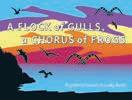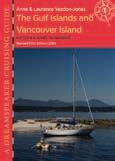
























P.L. McCarron
British Columbia Lullaby (Sandhill Book Marketing $14.95)
Mikaela Cannon
Foraging as a Way of Life: A Year-Round Field Guide to Wild Plants (New Society $434.99)
Steve Burgess Reservations: The Pleasures & Perils of Travel (D&M $26.95)
Sam Wiebe
Ocean Drive: A Novel (Harbour $24.95)
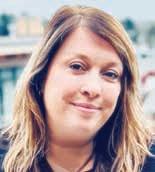
Julie Wilkins
We’re Happy You’re Here (Orca $21.95)
Marion McKinnon Crook
Always On Call: Adventures in Nursing, Ranching, and Rural Living (Heritage House $26.95)
Daniel Marshall
Untold Tales of Old British Columbia (Ronsdale $24.95)
Perry Bulwer
Misguided: My Jesus Freak Life in a Doomsday Cult (New Star $26)

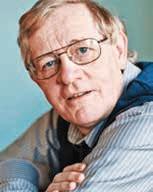
Jim Reynolds Canada and Colonialism: An Unfinished History (UBC Press $32.95)
Sarah Gilbert
Our Lady of Mile End (Anvil $20)
Lorraine Weir with Chief Roger William
Lha yudit’ih
We Always Find a Way (Talonbooks $35)
Lou Allison & Jane Wilde
Gumboot Guys: Nautical Adventures on B.C.’s North Coast (Caitlin $26)
Franke James came to the aid of her sister, Teresa Heartchild, when she was placed in a nursing home. Heartchild, born with Down syndrome, had been raised by her parents in a nourishing environment including enrollment in a private school for 12 years. But then Heartchild’s mother died and her father became ill and frail. Two other siblings, acting as guardians, decided Heartchild was “incapable” of making her own decisions and put her in a home for elderly patients. “The nurses at the home told me Teresa cried every day and did almost nothing,” says James who fought her siblings to free Heartchild and bring her to live in Vancouver. Teresa now lives with James and her husband in Vancouver, where she writes every day, makes art and celebrates her freedom. James, the author of three other books dealing with environmental activism, free expression and ethical decision-making, tells their story in Freeing Teresa (The James Gang $19.99), which is also coming out as an audiobook later this year, narrated by a cast of actors including Lauren Potter, who was also born with Down syndrome.
9781999406103
hen graphic novelist Sarah Leavitt’s partner, Donimo, died with medical assistance in 2020, Leavitt writes, “I continued living, which surprised me. We had been together 22 years.”
W SLeavitt turned to writing a month after Donimo’s death as a way to cope with grief. At first, she made small sketches, which grew into abstract images. Some were layers of watercolour, others coloured pencil; some with text, others without text.
“What is this anyway?” Leavitt asks. “It’s not anything I’ve seen before or walked through ever. It’s nothing I would have thought I could walk through.” She concludes, “It’s grief is what it is.”
Leavitt’s experimental works have been compiled into the graphic memoir, Something, Not Nothing: A Story of Grief and Love (Arsenal Pulp $27.95), which will be released in Autumn 2024.
“I think of them as a kind of travel diary, a record of my exploration of the unfamiliar new world I found myself in,” says Leavitt who took comfort in the writing of a rabbi who had watched many people die. “[The rabbi] began to believe in the olam habah, the world to come,” writes Leavitt. “The rabbi said ‘I have learned that there is something—not nothing—out there waiting for us, something wonderful and loving and peaceful and joyous.’”
Sarah Leavitt’s earlier, much-acclaimed graphic memoir, Tangles: A Story About Alzheimer’s, My Mother and Me (Freehand, 2010) is being made into a feature-length animation. Seth Rogen (who is from Vancouver) and Lauren Miller Rogen, founders of the Alzheimer’s organization Hilarity for Charity, are both producers on the film. The cast includes Julia Louis-Dreyfus, Bryan Cranston, Samira Wiley, Wanda Sykes and Sarah Silverman 9781551529516
ix years after his last collection of poems, 9 X 11 (New Star, 2018), Michael Turner is back with the playfully titled, Playlist: A Profligacy of Your Least-Expected Poems (Anvil $20). Followers of Turner will know that he got his start as a touring musician in a band he co-founded in 1987 called the Hard Rock Miners, which inspired his second book, the memoir/documentary fiction Hard Core Logo (Arsenal Pulp, 1993), made into a popular film of the same name in 1996.

Playlist, some twenty years later, follows Turner’s early musical beginnings in childhood, through early adulthood as a touring musician, and into later years programming nightclubs (such as Vancouver’s long-gone, lamented Railway Club) as he investigates his poetry writing practices. Publicity for this book states, “Modelled after the American folk music revival songbooks of the 1950s and 60s, Playlist fiddles with a two-part writing system that begins with the songbooks’ contextual introductions and ends with the songs—or in this instance, poems—to which they refer.”

It will be up to readers to determine if Turner is parodying himself or looking more seriously into his life’s work to date. A hint might be found in Turner’s quote from a 2018 interview for Read Local BC: “I have come to trust poetry, but for so long I had a disingenuous relationship with it.” 9781772142280
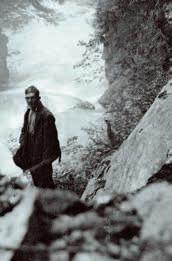
Daniel Marshall
A collection of fascinating stories of the extraordinary and astonishing in B.C.’s history.
“Riveting! Guaranteed that when you start reading you won’t quit and you will emerge with a new, and often unsettling, view of this place known today as ‘British Columbia.’”
WENDY WICKWIRE, author of At the Bridge
978-1-55380-704-9 (PB)
978-1-55380-705-6 (EBOOK)
6 x 9 330 pp $24.95

Daniel Smeenk
Smeenk offers insights, from an autistic writer, and provides accessible and comprehensive information and practical advice to inspire neurotypicals to greater empathy and understanding of the autistic adults in their lives.
978-1-55380-695-0 (PB)
978-1-55380-696-7 (EBOOK)
6 x 9 280 pp $24.95
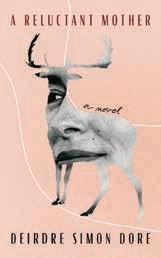

Deirdre Simon Dore
Frida and her husband Blake have chosen not to have children. Concentrating on her artistic career instead, Frida has mostly managed to accept this difficult decision. That is, until a stranger knocks on their door with a child she insists is Blake’s daughter.
“Dore’s heroine, is fierce, hardcore, full of fire, with a moral compass just steady enough to navigate nightmares and heartbreak.”
LISA MOORE, author of February
978-1-55380-710-0 (PB)
978-1-55380-711-7 (EBOOK)
5 x 8 350 pp $25.95
Tong Ge
A family saga set in China during its most tumultuous time of the twentieth century, including the Japanese invasion, civil war, and the Communist takeover.
“Golden Phoenix’s voice is strong. It feels that she is right there, sitting with the reader, telling her story.”
Miramichi Reader
978-1-55380-698-1 (PB)
978-1-55380-699-8 (EBOOK)
5 x 8 • 250 pp • $22.95
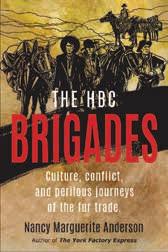
Culture, conflict and perilous journeys of the fur
Nancy Marguerite Anderson
A lively recounting of the gruelling thousand-mile journey faced by the brigades of the Hudson’s Bay Company as they pushed to reach the isolated furtrading posts and the First Nations people who struggled with the desire to resist, or assist, the fur company’s efforts.
978-1-55380-701-8
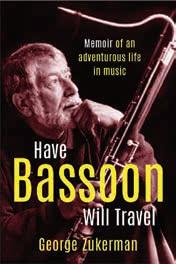

Memoir of an Adventurous Life in Music
George Zukerman
With humorous anecdotes and compelling stories, trail-blazing George Zukerman recounts his life as a concert bassoonist and impresario.
“His was the sort of life that generates stories, more than a few, and we’re lucky he set some of them down for us here, in his own confiding, humorous, inimitable voice.”
BILL RICHARDSON, writer and broadcaster
978-1-55380-713-1 (PB) • 978-1-55380-714-8 (EBOOK)
6 x 9 275 pp $24.95
Debbie Bateman
This bestselling book explores a pivotal time in almost every woman’s life — menopause. Bateman “is wise enough to take the tropes of older womanhood and use them to fuel this excellent collection of linked short stories. This is a collection not only for women but for anyone who loves one.”
CARELLIN BROOKS, The British Columbia Review
978-1-55380-692-9 (PB)
978-1-55380-693-6 (EBOOK)
5 x 8 225 pp $21.95
Jaymie Heilman
Three teens set out to stop a pipeline, but their secrets, anxieties, and one obnoxious ex-boyfriend might just explode their friendship first.
“As brave as it is thought-provoking and heart-achingly real.”
CARRIE FIRESTONE, author of Dress Coded
978-1-55380-689-9 (PB)
978-1-55380-690-5 (EBOOK)
5 x 8 200 pp $19.95
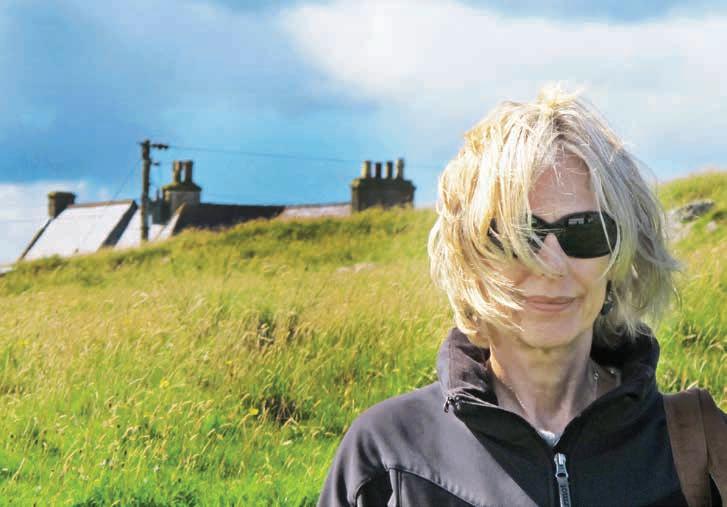
While trawling through bookshelves at a cottage she was renting in Scotland, Marilyn Bowering found a book describing a historic Gaelic poet: “Mary MacLeod of the seventeenth century, whose songs live on as memorials more lasting than stone.”
It wasn’t the first time Bowering got caught up with Mary MacLeod, that rarest of bards in the 1600s — a female. Bowering paid tribute to this rebel poet in Threshold (Leaf Press, 2015), so named because Mary MacLeod was banned from composing any song indoors or outdoors, so she defiantly wrote a song on her threshold instead.
In her much longer book of memoir, poetry and liter-
ary investigation, More Richly in Earth (McGill-Queen’s Univ. Press $34.95), Bowering revisits this important bard who wrote during a time of war and colonization in Gaelic Scotland, who was both honoured and marginalized in her lifetime (at times referred to as a jewel and other times as a witch).
Sooke-based Bowering has received many awards for her writing including the Pat Lowther Award, the Dorothy Livesay Prize, the Ethel Wilson Prize and several National Magazine awards. She grew up in Victoria and has lived in the United States, Greece, Scotland, Spain and Canada. 9780228021124
s someone who has journeyed across numerous countries as an anthropologist and ethnobotanist, Wade Davis found himself suddenly grounded at his Bowen Island home during the COVID-19 pandemic lockdown. It proved a fruitful time for writing and reviewing past essays, culminating in Beneath the Surface of Things: New and Selected Essays (Greystone $36.95). Davis’ insights range from the Great War and the birth of modernity, the demonization of the coca plant, fear of climate change, to the never-ending conflict in the Middle East. One of his most notable essays is “The Unraveling of America,” a grim picture of contemporary US society which was exposed during the pandemic. “Covid-19 didn’t lay America low; it simply revealed what had long been forsaken,” writes Davis. “As the crisis unfolded, with another American dying every minute of every day, a country that once turned out fighter planes by the hour, could not manage to produce the paper masks or cotton swabs essential for tracking the disease.” First published in Rolling Stone magazine in 2020, this essay attracted five million readers and 362 million social media impressions in less than a year. Davis’ critique isn’t so much an indictment as a call to confront uncomfortable truths in the hopes of sparking a path towards rehabilitation and recovery.
9781778400445

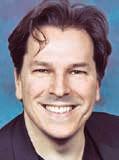
Sebastien de Castell developed a fan base with his sword ‘n’ sorcery fantasy novels in his series, The Greatcoats about the noble but disbanded Greatcoats, specifically Falcio Val Mond and his “fellow magistrates” Kest and Brasti. He followed this with a YA fantasy series, Spellslinger , which was nominated for the Carnegie Medal and is published in more than a dozen languages. Now de Castell has launched a new fantasy series, Court of Shadows with Play of Shadows: Book 1 (Mobius $35), about the grandson of two renowned Greatcoats named Damelas Shademantaigne who flees a duel by hiding out in a theatre. Trouble follows Damelas as he begins channelling the spirit of a dead villain, which causes him to reveal his country’s long-buried, dark secrets while on stage.
9781787471474

Tamar Griggs was a young woman in 1968 studying art and dance in New York City when she accepted an invitation for a short sailing holiday in the Mediterranean. It was a time of exploration and also coming to terms with personal demons. “I was confident in my physical body, showing a happy face to the world, but deep down I was terrified, hiding disturbing information … which I did not understand,” she writes in Tamar at Sea (Still Wild 4 Life Press $38.50). Little did Griggs know that this brief respite would lead to a year at sea. Carried by three different boats across thousands of nautical miles, her memoir narrates her experiences with a shipwreck on the coast of Spain and hitchhiking across the Atlantic Ocean on her way back to America with two Englishmen she didn’t know. Griggs is a photographer, writer and naturalist based on Salt Spring Island. 9781775211129
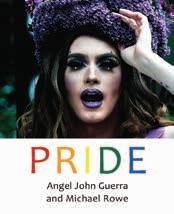

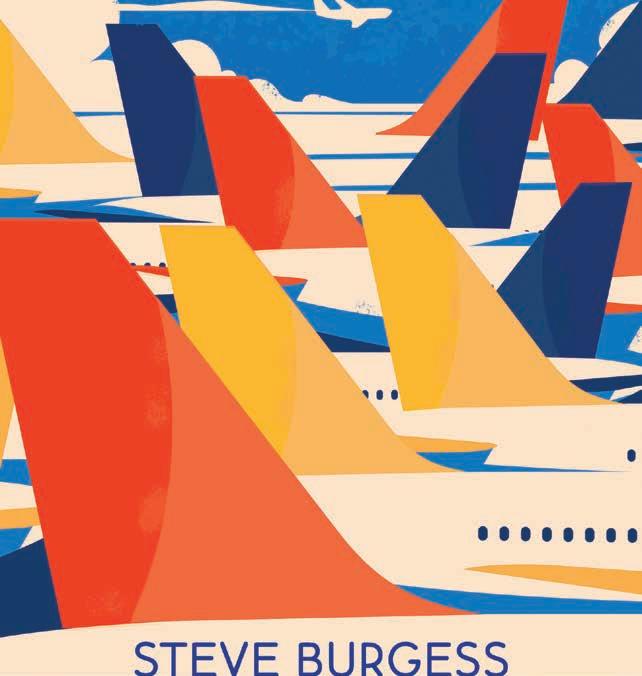
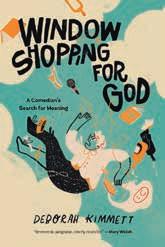
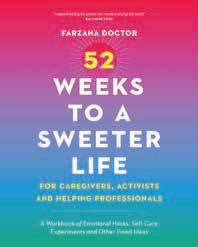
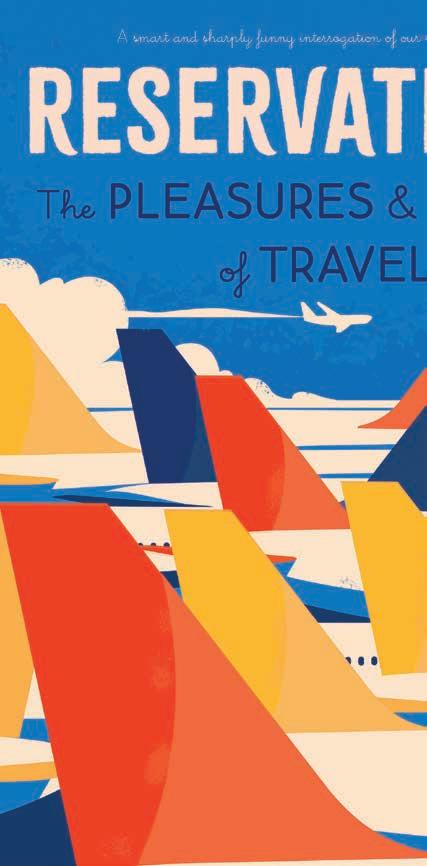


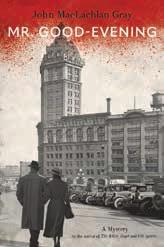
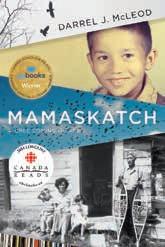
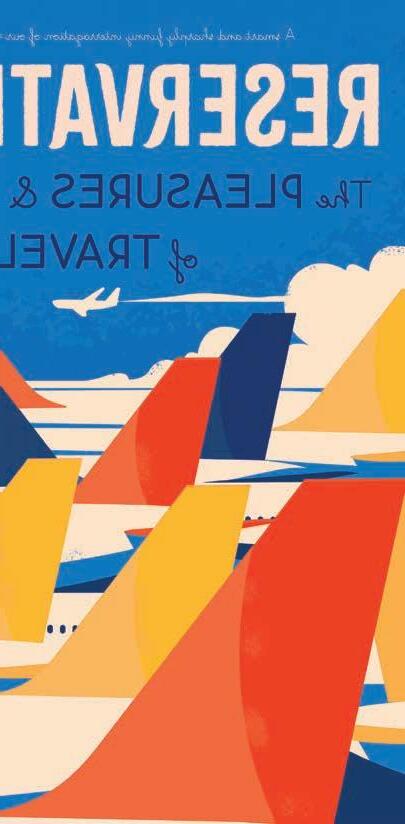
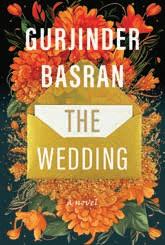

recent encounter with work by andrea bennett was an article they wrote for The Tyee. The piece was about a “ghost trestle”—an old wooden bridge that was once used to transport newly-felled logs to the water, which then (in the early 1900s) was the standard means by which timber was moved. Part of that article dealt with some history regarding the issue of how to rename the town of Powell River, where some of the citizens were having problems with their home being named after Israel Powell, a provincial superintendent of Indian Affairs.
Israel Powell was a man who’d played a role in sending Indigenous children to residential schools and in enforcing laws in the townsite that severely restricted access for the local First Nation people. Since then, not surprisingly, the town has had an official name change and is now known as qathet.
Those of us in the settler population have grown more accustomed to these place name changes, just as those of us remaining in the cis-gendered populace are learning more about what it means to be non-binary like bennett. Some of the prose poems in their new poetry collection address bennett’s life experiences and speak directly to this:
People visited our town on the weekends because there was a natural-food store whose name recalled Biblical plenty. Archways into the alleys where horses used to be kept. A bookseller who rescued orphaned raccoons. Waterfalls off this road and that. Down that street I got called one name for wrong gender and then another and a Frosty burst at my feet. Another time I was still the wrong gender but a man slowed his car down and told me all the things he’d do to make my wrong body his.
Some of the poems (all untitled) track subjects bennett has written about before. The subtitle of Like a Boy but Not a Boy (Arsenal Pulp, 2020), their previous nonfiction book, reveals its content: Navigating Life, Mental Health, and Parenthood outside the Gender Binary. Many of the topics covered in those essays resurface here, but this time those subjects reveal themselves through poetry.
Food serves as the predominant metaphor, not surprising from a book with berries on its cover. The imagery is most evocative in the pieces that track their pregnancy, with “…the embryo… likened to food: sesame seed, chickpea, kidney bean” and later to lime, or fig; then “Bell pepper, half a footlong, a small cantaloupe.”
Those berries on the book cover provide substance for a poem that’s too long to cite, but one that describes how blueberries grow from “a bloom that looks like a proto-berry” and that the berry later resembles its predecessor. They extend this descriptor to the role of parent and child where “…
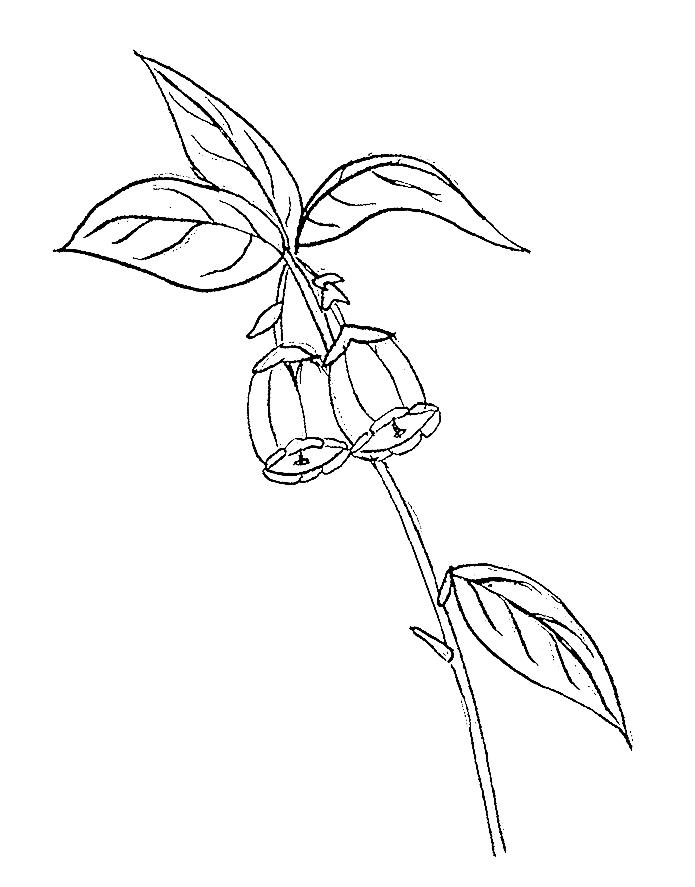
the berry takes the shape of the bloom by andrea bennett (Talonbooks $18.95)
BY HEIDI GRECOthe daughter is the blueberry and the mother is the bloom who came before it.” Yet that is not the case here, with bennett addressing in another piece what seems like a “non-relationship” with their mother:
They want me to love my mother but I nothing my mother.
Despite the many uses of food in bennett’s poems—melons, eggs,
chickens, pigs, pineapples—the pivot for these is the counterpoint of hunger. And along with hunger comes its contemporary bugaboo, our obsession with weight: “I can tell you how many calories are in an apple and how many calories make up a pound,” bennett writes. But they also acknowledge hungers beyond those of physical cravings when they write of anger as a kind of appetite that can get stuck inside, and conclude one poem with the line, “I swallowed it all and I was still hungry.”
In addition to their work as a reporter and a creative writer, bennett is a skilled graphic artist. Their artwork graces the covers of a number of books that I love—poetry collections by Jennica Harper and Arleen Paré, and a wonderful novel from the Québecois author, Christian GuayPoliquin . Interspersed between the sections of this book are a few of bennett’s fine line drawings. Their skill in so many artistic pursuits, not all that uncommon in many who write, seems to be yet another aspect of the freedom implied by the non-binary “label” (if the term “label” can be applied)—a freedom to explore, to avoid being pigeonholed into any one genre or mode of expression. 9781772015515
Heidi Greco is a cis-female who works in Surrey on the land of the Semiahmoo First Nation.
tandrea bennett. (above) drawings by andrea bennett


Helen Knott takes inspiration from the matriarchs who came before her — “women
who carried families and communities on their backs.”
I come from
With clear eyes and a strong heart, Helen Knott (Prophet River First Nation) continues the story of her path in Becoming a Matriarch
Knott’s voice shifts perspectives, allowing former self, in-the-moment self, and becoming self to reflect and participate in the story-sharing.
In her debut memoir, In My Own Moccasins, readers were introduced to Knott’s unflinching truth-telling skills, measured by the warmth of her personal voice.
Intergenerational trauma can be a catch-all phrase—a nod toward acknowledgment, yet one that avoids truly seeing all we carry as Indigenous people. Knott’s brilliance is in communicating the weight while describing the way forward. Her writing doesn’t feel like the polarized ranges of dark/light, then/now. Rather, the two memoirs share a rising note that builds a feeling of being able to hold all possibilities.
“I crafted a voice that would be listened to…aware that it took a long time for our voices to be carried into places where they would be heard,” Knott writes. She is humble about her accomplishments, seeing them as the tool rather than the goal. “I can leverage what I’ve learned from the white world and tell their stories.”
She keeps the why central to how she uses her voice. “I come from a line of ghostly women. Women who were sometimes apparitions in crowded rooms. Women who have often existed
After losing her mother and grandmother in short succession, Helen Knott steps into bigger moccasins.
on the peripheries of larger society.”
With the passing of her mother, Shirley Knott, and grandmother, June Bigfoot, within a couple of seasons, grief and love are one as Knott mourns. Losing family matriarchs means losing “women who carried families and communities on their backs.”
“I come from a line of women who will not be overlooked, because I can write their memory into the pages of a book. I can make people see them like I saw them—as the sources of everything. Here you are, finally seen.”
Knott’s structure includes a rhythm, a rise and fall between warmth that made me smile, to sharing “the waves of stinging tears held in.”
A memory of a family trip to a zoo floats up, where Knott notices Grandma is standing in the hot sun, her eyes fixed on a bear:
“She pointed her finger at the bear, who was repeating a pattern of movement. Two steps forward, a circling of the head, two steps back. Two steps forward, a circling of the head, two steps back.
‘His mind is gone,’ she said sadly… Grandma was raised in the bush and was not unfamiliar with bears. She traversed land all alone as a young girl, often taking a kettle and tea into the middle of nowhere for an afternoon.
The bear did not break the sequence.
People ate ice cream while offering their kids their first glimpse of the wild, a big black bear with a lost mind, stuck in a small man-made home.
I wonder if Grandma saw herself in that bear—something wild, something trapped, something committed to pattern and memory, something that longed to be free but never would be.”
We know from In My Own Moccasins that Knott has the bravery to show the “precarious places” she’s walked through: trauma, sexual violence, addictions. There’s no pretending with Knott. She acknowledges when “Numbness, my old friend, seemed to beckon to me in the distance.”
The memories of old coping mechanisms are replaced with her new mantra: “I come from strong women.” This is the pulse of the memoir, reminding readers of the universal need for sources of truth, guidance.
Facing the rite of passage that death brings is to step out of certain family roles and into new ones. Readers witness Knott stepping into the full understanding of her purpose, a living memory keeper, “yetchay kay nusgee” (I remember things from the past). Acquiring understanding in a short period of time is the hallmark of this passage for her, including learning to hold memory without carrying the weight of it.
The multiple lenses needed to understand her journey are reflected in Knott’s choice to blend memoir, poetry, interludes and dreams.
I am the black bear.
I am the spectator.
I am the oblivious child eating ice cream.
I am all these things.
I am named Helen, after my kohkum who raised my dad.
My middle name is June, after Asu. I carry the names of the women who came before me. I was aged with memory the day I was born.
Interlude #2 introduces readers to dream maps—dreams drawn out on animal hides. “The dreamers would travel outside of their bodies to see what was to come,” Knott writes. She then shares a family story in which her grandmother’s grandmother is praying on a rooftop with a dream map in hand. It’s a view into the power of her matriarchs, and what continues. Careful protocols are required as “the dream map is so powerful it can drain the people who care for it.”
The maps held spiritual strength to assist the dreamer into the next world and were usually buried with them. “Sometimes, though, they would leave pieces of the maps to help those they left behind.”
This is the beauty of Becoming a Matriarch—a glimpse of a map to those of us still finding their heart strength.
9780385697774
Odette Auger, award-winning journalist and storyteller, is Sagamok Anishnawbek through her mother and lives as a guest in toq qaymɩxʷ (Klahoose),
x
n qaym
(Tla’amin), ʔop qaymɩxʷ (Homalco) territories.

Anansi


The Sixties Scoop, small town politics, local sex workers and a family ranch feature in this memoir set in 1970s Cariboo-Chilcotin.
Always
by
BY
SAGE BIRCHWATEROn the heels of her bestselling memoir, Always Pack a Candle: A Nurse in the CaribooChilcotin (Heritage House, 2021), Marion McKinnon Crook has crafted another engaging memoir of her life as a community health nurse in Williams Lake and the surrounding Cariboo area.
Always on Call is a fine follow-up. Crook’s first memoir depicted the beginning of her professional career as a novice in community nursing. At the age of 21, she arrived in Williams Lake by Greyhound with her newly minted Bachelor of Science in Nursing degree from Seattle University. Crook was immediately faced with navigating the steep learning curve of putting theory into practice and boots to the ground in a broad, unfamiliar landscape.
Spin forward a dozen years and Always on Call offers a new, mature nursing perspective. Like her previous memoir, it depicts a year in her life, from March 1975 to March 1976, with some artistic license thrown in for good measure.
The author is now 34 and married with three kids, ages 10, 8 and 3, and her husband is a lawyer. The family lives on rural acreage just outside of Williams Lake where they keep cattle, sheep, chickens and a 500-pound mama pig—their oldest child, Janice’s 4-H project. Their two youngest children, Glen and David are adopted and have Indigenous ancestry.
So the scene is set with Crook balancing her life as a mother, wife and public health nurse. Janice and David, the two oldest kids, both have 4-H projects and the usual ups and downs in school. Three-year-old David is shuttled back and forth to day care, then to preschool.
As in her previous memoir, Crook is careful not to disclose the identities of most people in her narrative. Her kids’ names are accurate but her husband’s is made up.
There is good reason for this discretion. Perhaps the most poignant aspect of her writing is the author’s capacity to speak to social issues: racism, sexual
abuse, bullying, poverty, bigotry, sexism, medical malpractice, transgender questions and moral dilemmas—both in the office and in the community as a whole.
She does name a few individuals as signposts of the community and the times: Rancher Freddy Westwick, a larger-than-life sawmiller in Miocene; the colourful Pan Phillips from the Blackwater; and prominent educator June Streigler
The reader gains insight into the inner workings of office politics and the stresses of a government agency like the Cariboo Health Unit, where a manager retires and the government drags its heels replacing her. The nurses chip in to rotate the supervisory work, until they say enough is enough.
While Crook is acting administrator, a young woman shows up demanding to see a nurse. “I’ve got the clap,” she confides.
Crook sets out the procedure: provide some antibiotic medication for the infection, take a swab of the infected area, and get a list of sexual contacts from the woman. When she discloses the names of a dozen or more men, including some prominent citizens, it’s obvious she is a sex worker.
A young nursing student questions whether the woman shouldn’t be reported since she is probably “charging for her services and that’s illegal.”
Crook cools her off. “If we reported women who were charging for sex, they


wouldn’t come to us for treatment. If they didn’t come for treatment, we’d be failing them and the community because the diseases would spread.”
Crook advises the young intern not to put her personal prejudices ahead of good nursing practice. “That means whatever your private opinion, treat the patient with respect.”
One of the strengths of the book that keeps the narrative lively is the juxtaposition of the author’s professional life at the health unit with her family life as a mother and wife and the always busy demands on the farm.
“Parenting is such an imprecise vocation,” Crook admits.
The issue of Crook and her husband adopting two Indigenous children comes up. Remember the Sixties Scoop?
When the author and her son, David, (now four years old) head over to nearby T’exelc (Williams Lake First Nation) to meet with a woman who has a boar to breed Crook’s daughter Janice’s sow, the woman asks if the child belonged to a local T’exelc family. Crook is caught off guard because she doesn’t know the origin of her son thanks to the enshrouded secrecy of the adoption process.
She says the T’exelc woman seemed both surprised and resentful.
Crook explains how the adoption
took place: “When the social worker told us she had a baby for us, she added, ‘Oh, and he’s Native. Is that alright?’”
Crook says she and her husband looked at each other.
“It didn’t matter to us. We didn’t think it would matter to others. Or that it might matter to his clan, his band, his tribal community, and one day that it might matter to David. We had been incredibly naïve.”
The author’s personal honesty in these reflections is refreshing.
Each chapter takes the reader on a unique journey of discovery. Home visits to rural communities where numbered addresses were nonexistent. “Half a mile past the end of the snake fence, then turn right and cross two cattleguards” were often the only directions.
Always On Call is both informative and entertaining, and an insightful look into how things were in the Cariboo and the healthcare system nearly 50 years ago.
“It was all one giant, complicated, satisfying, balancing act,” Crook concludes. “It was enough. I was content— for now.”
9781772034691
Author of nine books, Sage Birchwater of Williams Lake is one of BC’s essential historians and journalists.
“[Public health nurse] home visits to rural communities where numbered addresses were nonexistent could be as vague as: Half a mile past the end of the snake fence, then turn right and cross two cattleguards.”
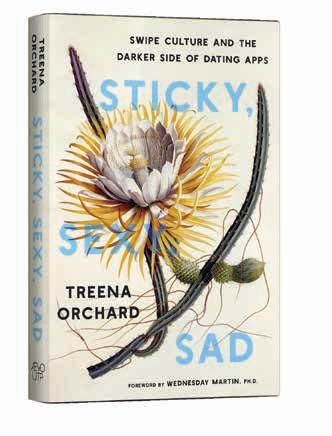

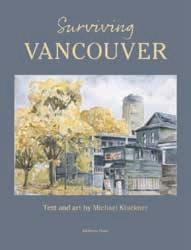
Michael Kluckner
With a focus on the old and the new, this well known writer and artist puts forth his take on what heritage has survived in Vancouver and how we might cope with the new realities of a changing city.
Beautifully illustrated with Kluckner’s water colours, maps and sketches.
9781988242545 $24.95 pb Midtown Press


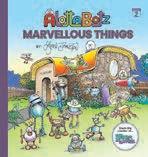
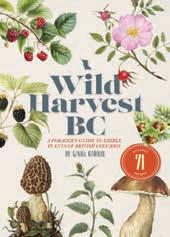
A Forager’s Guide to Edible Plants of British Columbia
Linda Gabris
Life-long forager Linda Gabris offers information on wild foodstuffs, divided into sections from Greens, Berries, Tree Fruit/Nuts to Mushrooms with extra sections on making Woodland Teas, Making Birch Syrup and Survival Foods. Each wild edible is shown in photographs with information and then accompanied by one or two recipes using wild ingredients
9781777876425 $24.95 pb OP Media Group
The Botshop
Book #1
9781739063207 $14.95 pb
Marvellous Things
Book #2
9781739063214 $14.95 pb
A Dog with No Name
Book #3
9781739063221 $14.95 pb
The ALOTTABOTZ series - beautifully illustrated books by the creator of the cartoon strip For Better or For Worse. Cartoonist Lynn Johnston has turned her creative hand to a wonderful world where everyone is a robot (even pets) - of the most adorable and fun kind! Three books available now and three more new ones to come – find them at your local bookstore! Lynn Johnston Productions Inc.
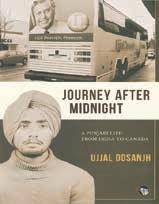
A Punjabi Life:
From India to Canada
Ujjal Dosanjh
This autobiography is the compelling story of a former premier of British Columbia, the first person of Indian origin to lead a government in the western world. Ujjal Dosanjh recounts his many experiences from his early life in rural Punjab, to emigrating to the UK, then to Canada. He discusses the immigrant experience, post-Independence politics in Punjab, the Punjabi diaspora and the inner workings of the democratic process in Canada. A fascinating read.
9789354471278 $26.95 paperback edition
Speaking Tiger Press/U Dosanjh


Jokes You’ll Love to Tell A Prescription for Laughter
Dr. David Goldberg
This collection of side-splitting jokes demonstrates the art of the extended punchline, where the journey is just as entertaining as the final destination. Originally compiled as a fundraiser for a local hospital, the success of the first edition is now followed by this revised and expanded edition. The author is a family doctor and surgical assistant who knows that laughter truly is the best medicine! Partial proceeds to the Prostate Cancer Foundation of Canada. 9781068832000 $18.95 pb



J.
J. Duane Sept 9780973981964 $14.95 pb Calypso
Also available in the Calypso nature series: Common Mushrooms, Medicinal Mushrooms, Edible & Medicinal Plants of the Northwest, Animal Tracks & Signs, Common Trees and more - see them all at your local bookstore!

Jennifer Schell Lirag
This may be the first cookbook to profile a single BC winery and its founding family. A collection of more that 50 delicious recipes, favourites of the Wyse family, also showcase the varietals and award winning wines produced at their winery in Osoyoos - where hospitality and creating fine wines are the top priorities
9780995851306 $36.95 pb Burrowing Owl Vineyards Ltd

Are you an avid angler? This multi-award winning fly fisher shares his knowledge of fly tying and patterns for stillwater fishing. A great how-to book for anyone wanting to create their own flyfishing flies at home. Phil Rowley shows how to tie everything from Chronomids, Scuds, Damselflies to aquatic bugs and attractors that fish will love- the perfect gift for the flyfisher in your family.
9781777876418 $29.95 coilbound OP Media Group


Unit #4 - 3308

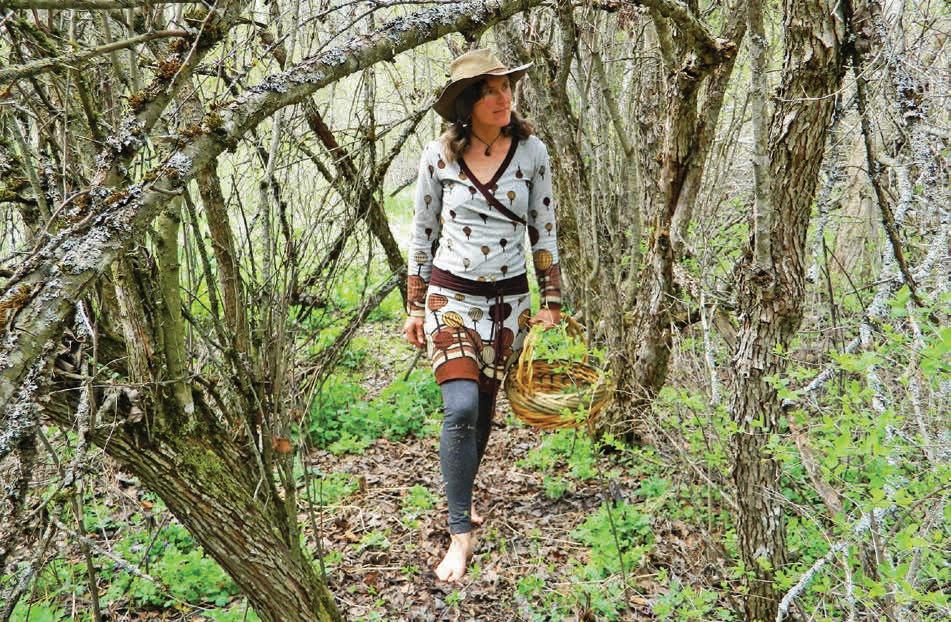
Reviewer
Things are greening up on this April day on the northernmost of the Southern Gulf Islands, and so we’re hiking up to the local nettle patch, just to see how our favourite venomous plants are doing. They’re doing quite well, it seems, despite a scare a few days earlier when we found that these nutritious weeds had been decimated by a careless picker—someone not savvy enough to take only the top few leaves, and had instead snipped the plants off at ground level. Not coincidentally, that was around the same time that we saw an online ad offering fresh nettles for $25 a pound, at which price out-of-season supermarket spinach begins to seem like the bargain of all bargains.
We’re not harvesting today, but along the trail we pause to pluck a few leaves of Western bittercress, a beautiful spring bloomer and member of the mustard family that offers a mild isothiocyanate burn to the adventurous nibbler. Deer, for some reason, appear to shun it, preferring instead the reputedly ungulate-proof garlic and rhubarb in the garden. Oh, well. At least we know that our deer are not vampires. We stop at a patch of chickweed, savouring its slight vegetal sweetness, and a few feet farther along snap a sprig of broadleaf maple flowers from an overhanging bough. Some friends swear by maple blossoms as a spring tonic, but these are mealy and bland, clearly asking to be chopped, stirred into a pancake batter, and doused with maple
syrup for proper Acer flavour.
Foraging as a way of life? I am, admittedly, a rank amateur. But in my British family, foraging goes far back, well beyond any written accounts. A maternal great-grandmother was the resident herbalist in her Scottish village while on the paternal side, my father taught his sons to pick fiddleheads from the New Brunswick mud, although we did not inherit his taste for dandelion wine.
So when it comes to foraging, amateur or otherwise, Mikaela Cannon and I are pretty much on the same page, and in her pages I’ve already learned some useful tips. Who knew, for instance, that nettle seeds are a powerful stimulant, although doses of more than 30 grams a day “can prevent
you from sleeping”? The next time I need to pull an all-nighter, and that might come soon, I’ll head to the weed patch first. I was similarly unaware that catnip, should you be able to keep your furry friends from raiding the pantry, has an analgesic effect on humans. There are more than a few such snippets of knowledge to be gleaned here. Where I have to differ with Foraging as a Way of Life, though, has to do with its stated intent—not so much the “find connection with the land” part, but the author’s contention that you can “feed your family locally, seasonally, and sustainably.” To do so in the modern world would require unbelievable luxuries of time. For instance, Cannon recommends harvesting, roasting and grinding cleaver seed to
Swedish-born Mikaela Cannon lives on a small organic farm in Armstrong, BC where she and her family raise chickens, sheep and vegetables. Cannon also facilitates classes, workshops and hikes focused on foraging and wildcrafting. One of her aims is to pass on to the next generation the skills and knowledge required to harvest and prepare wild foods. It led Cannon to take her own children along with her on forest excursions.
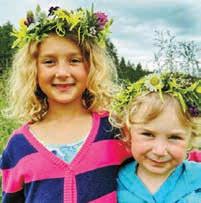
“I set about writing of the foraging we do as a family with the hope that our children, when they are older, will have a record of the knowledge gleaned, and a glimpse into how they spent their childhood,” Cannon writes. Other people found out about Cannon’s project and expressed interest in having copies of their own. Voila! the idea for her book was born.
make a caffeine-free coffee substitute. The operation, she cautions, is “fiddly.” I’m going to stick with the nettle seeds, which at least promise a bit of a high. There is something to be said, however, about any book that encourages people to put down their phones, head outdoors and pay close attention to what grows where and when. The real reward of foraging, I’d argue, lies not in being able to reduce your grocery bills but in establishing a stronger connection with the ground beneath your feet, honouring the Indigenous people who actually did live off the land in a sustainable fashion, and communing with the more-than-human world that sustains us in more-than-material ways. Readers should note that Cannon lives in Armstrong and her book is geared towards the flora of the Okanagan and the Kootenays. Residents of southwestern BC would be advised to investigate Luschiim’s Plants (Harbour, 2021) a collaboration between Coast Salish knowledge keeper Luschiim Arvid Charlie and ethnobotanist Nancy Turner [Turner wrote the forward to Cannon’s book]. Foraging as a Way of Life’s heft and seasonal organization diminish its usefulness as a field guide; for that it’s best to turn to Jim Pojar and Andy MacKinnon ’s smaller but invaluable Plants of Coastal British Columbia (Lone Pine, 1997, 2004). And whether you come home with a bucket full of spruce tips or a basket full of pine mushrooms, the recipes in The Deerholme Foraging Book (TouchWood, 2014) penned by chef Bill Jones, will guarantee that your taste buds will be even more gratified than your wallet. Happy foraging … but if you raid my nettle patch, please take only the tender leaves.
9780865719972
Senior West Coast arts journalist Alexander Varty lives and forages on unceded Snuneymuxw territory.
Years ago, the facilitator of a communications group I attended gave us an exercise: Every night for a week when you get into bed, thank the different parts of your body for the specific things they do for you.
On the first night, I did the obvious: thanks to my legs for holding me up, to my arms for hugging my loved ones, etcetera. What else, I wondered, could I possibly thank my body for in the nights that followed?
As I persevered with the exercise, I discovered that my body didn’t just help with physical tasks — it enabled me to perform every single act in my day. This should’ve been blindingly obvious, but when I lay down to consider it, I realized I’d been unthinkingly treating my physical self as, at best, a beast of burden. If it didn’t perform as I wanted, I got angry. If it did, I ignored it until the next time I needed something. I wish I could say that this distanced and transactional relationship to my body was unique to me, but Tara Teng, a former Miss Canada, knows otherwise. Raised in a conservative Christian household and church community, Teng and her young female peers were eyeballed by older women in the church to make sure their bodies weren’t exposed in ways that might cause boys to sin.
Experiencing her body only in terms of how it might lead males astray is only one of the harms that Teng describes in Your Body is a Revolution . “Othered” bodies — the ones we don’t see onscreen or on the page — can internalize their invisibility. Racism and other forms of societal harm have, as we know from research, real effects on bodies, such as the doubled maternal mortality rate for Indigenous versus white mothers in Canada. Those who experience trauma in their bodies can turn to substance abuse, overeating or other forms of destructive self-soothing to shut out the painful reality of what they felt.
How can we defuse the effects of harms like these in a healthier way? The common answer is to reexperience those feelings physically, which is easier said than done. Teng, now a somatic practitioner, encourages her clients, and us through this book, to explore, experience and more deeply understand our physical bodies. Yes, this means bringing out the mirror and taking a good look at our vulvas, if you didn’t catch the second wave of feminism. It also includes embodied meditation, comprehensive sexual consent (including with ourselves) and other self-guided practices Teng includes at the end of each chapter.
Tara Teng, a former Miss Canada, encourages us to explore, experience and more deeply understand our physical bodies.
It is no surprise that freeing ourselves from the shame that it is all too easy to intuit from cultural messages and internalize, leads to knock-on effects. Taking up space in the world, saying no, defining our own needs rather than waiting for a partner or boss to magically understand and provide for them: all these things become newly possible when we slow down and deeply understand our own embodied experiences.
Teng sees our relationship with our bodies as a relationship with the world writ small, and it’s hard to argue with her. If we prioritize relationships that feel right in our bodies, maybe we won’t search for distraction and a cure for our ennui by browsing big-box stores, but will instead enjoy more meaningful purchases, ones where we are able to meet the makers. Perhaps we will start to understand our relationships with other humans and with the earth as sacred. Heck, we might even tear ourselves from the almighty screens that currently define our lives.
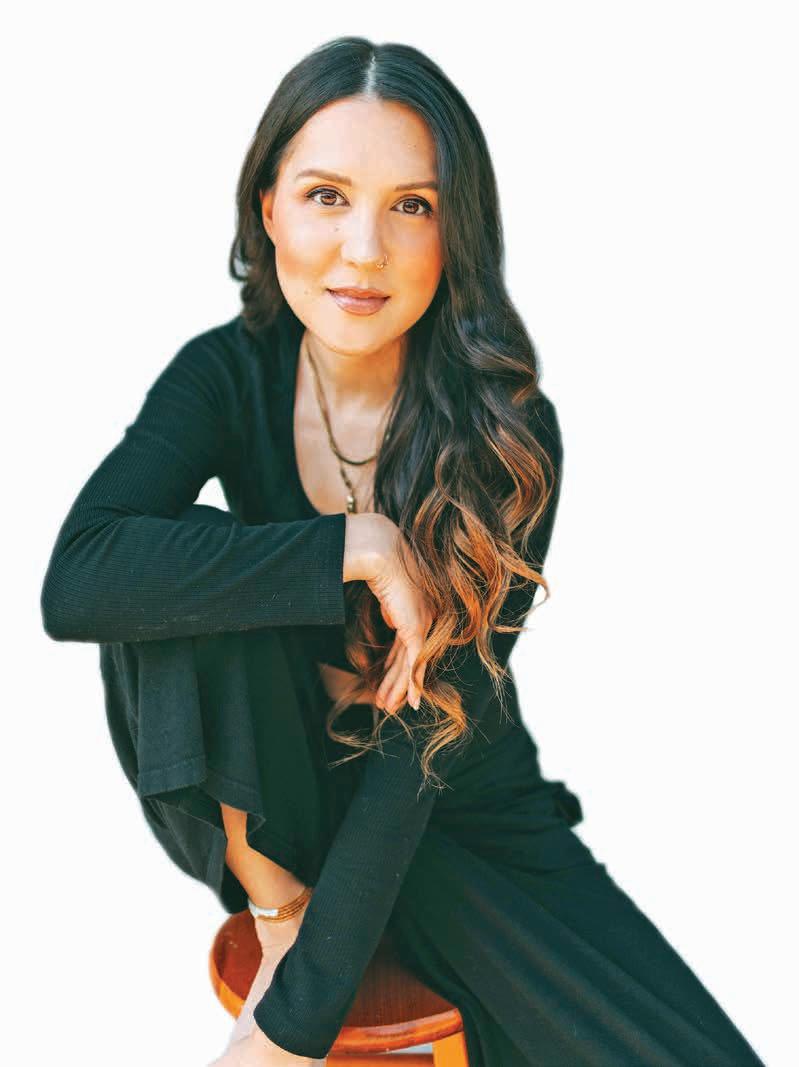
t“What if we could return to the way we felt before we learned to judge ourselves, to decide what we deserved and to punish ourselves for not measuring up to society’s body ideals? This is the revolution...”
This is not a breezy read, although it is written simply and clearly. Teng’s book contains some hard and haunting stories from her advocacy for sex trafficked women, work she took up after her Miss Canada gig. It links our current physically-distanced, emotionally-muted “normal” with capitalism, colonialism, slavery and other ills of the world where we live — probably not news to anyone who has ever fought for social justice, but worth restating nonetheless.
What if, this book asks, we could return to the way we felt before we learned to judge ourselves, to decide what we deserved and to punish ourselves for not measuring up to society’s body ideals? This is the revolution Tara Teng has in mind. And if honouring our own pleasure and focusing on joy is the key to that revolution, I suspect many readers will be eager to come along for the ride.
9781459752863
Carellin Brooks lives in a settler’s abled and cisgender lesbian body on the unceded territories of the xʷməθkʷəy̓əm (Musqueam), Sḵwxwú7mesh (Squamish), and səlilwətaɬ (Tsleil-Waututh). Her most recent book of poetry, Learned, contrasts her mid-1990s education at Oxford University and the lessons of the body she learned concurrently with London’s leather dykes.





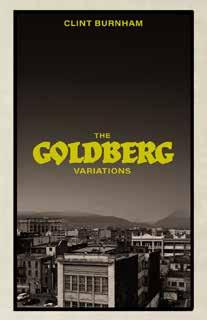


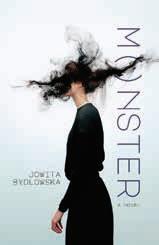

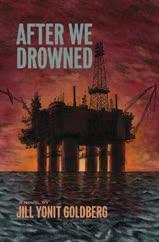

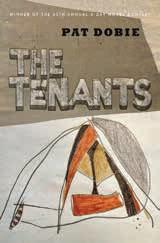
StaSio: a Novel iN three PartS Tamas Dobozy
From the author of the award-winning Siege 13 comes an engrossing detective novel told in three distinct novellas, each one tracing the ever-deepening involvement of detective Anthony de Stasio in a series of political nightmares.
“Stasio’s story possesses a weird magic, weighted by old world history, yet surging like lava.”
— Mark Anthony Jarman, author of Burn Man: Selected Stories
$22 | Novel | 232 pages | 978-1-77214-226-6
Mo NS ter JowiTa byDlowska
From the bestselling author of Drunk Mom and Possessed comes Monster, a mesmerizing, brave new work of autofiction. Monster is a shattering, feminist manifesto exploring sexual awakening, motherhood, immigrant trauma and the power of female rage.
$22 | Novel | 256 pages | 978-1-77214-224-2
a Bouquet Brought Back fro M S P ace keviN speNsT
A Bouquet Brought Back from Space subverts and sublimates traditions of religious poetry, love poetry, and song.
Playful in form, this fourth book of poetry by Spenst explores loss, love, faith, mental health, and poetic friendships.
$18 | p oe T ry | 96 pages | 978-1-77214-225-9
a fter We Dro WN e D Jill yoNiT golDberg
After an oil rig in the Gulf of Mexico explodes, everything in fifteen-year-old Jesse’s life deep in rural Louisiana is derailed. After We Drowned is a Southern Gothic coming-of-age novel that deals with environmental crisis, poverty, and the power of secrets.
$22 | Novel | 256 pages | 978-1-77214-227-3
Playli S t: a Profligacy of y our l ea S t- e x P ecte D Poe MS michael TurNer
Playlist: a Profligacy of Your LeastExpected Poems documents the life and practice of a writer who grew up in a musical household, spent his early adult years as a touring musician and his later years programming nightclubs, hotels, galleries and festivals.
$20 | p oe T ry/ m emoir | 128 pages 978-1-77214-228-0
t he t e N a N t S paT Dobie
Winner of the 45th Annual 3-Day Novel Contest In the city of Vancouver, even dirt costs. In The Tenants three of its residents are struggling with their homes — whether that’s grappling with real estate prices, simmering resentments, or an uneasy co-living arrangement with the local wildlife. $18

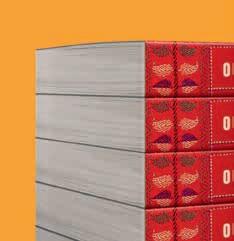

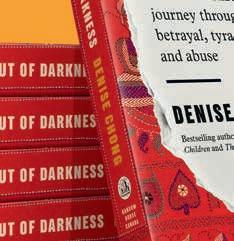



one woman’s journey to rebuild her world after a life-altering attack
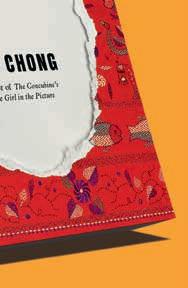




Gaman – Perseverance
Japanese Canadians’ Journey to Justice ART MIKI
This memoir explores the intense negotiations that took place between the Government of Canada and the National Association of Japanese Canadians, which resulted in the historic Japanese Canadian Redress Agreement on September 22, 1988.
LUCIA FRANGIONE
A gritty and spiritual story of transformation, forgiveness, accountability, and rebirth, Grazie takes us from Red Deer to Rome, from the Amazon to Andromeda.
AVAILABLE AT THE GIFT SHOP
Lha yudit’ih
We Always Find a Way
Bringing the Tŝilhqot’in Title Case Home
LORRAINE WEIR WITH CHIEF ROGER WILLIAM
A vital oral history of the first case in Canada to result in a declaration of Aboriginal Rights and Title to a specific piece of land.
AVAILABLE AT THE GIFT SHOP
Jump Scare
DANIEL ZOMPARELLI
The poems in Jump Scare dig deep into mental health, neurodivergence, grief, dreams, monstrosity, sexuality, pop culture, queer consumer culture, and the commodification of identity.

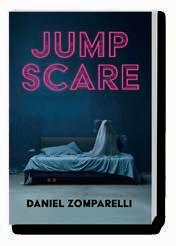
Reservations:
The Pleasures & Perils of Travel
by Steve Burgess (D&M $26.95) BY GRAHAM CHANDLERHis first overseas flight—in 2001— involved a budding romance. But Steve Burgess’ longer-lasting relationship to travel is based on an ongoing wanderlust coupled with the urge to analyse its effects.
“Why do we travel? A pilgrimage for self-definition? A search for Utopia? An epic quest for margaritas and hot sex?” Burgess asks in Reservations
“Global travel was once seen as a marker of sophistication,” he writes. “As the twenty-first century progresses, travel is increasingly seen as a sort of irresponsible collective behaviour. Once upon a time the traveller was an enlightened seeker. Now the tourist is just as likely to be viewed as one locust in an annihilating swarm. And that would be me.” However, he adds, “I do not like to think of myself as a locust.”
He wonders, “How do I see myself when I travel? I would prefer to pose as an enlightened voyager. But does that matter? Whatever romantic label I choose for myself—traveller, adventurer, explorer—a photograph taken inside a Boeing cabin will show no distinctions.”
“A good traveller has no fixed plans and is not intent on arriving,” said ancient Chinese philosopher, Lao Tzu “Works for me,” says Burgess. “My wandering strategy is the antithesis of that popular buzz phrase, the bucket list. A bucket list is not inherently bad. As it is commonly applied to tourism, the bucket list approach encourages the shallowest form of travel—get off the bus, take the selfie, check the box, move on.”
But that addresses only the first half of this volume’s subtitle. The other half—the perils—include the oftcavalier disregard for travel’s environmental impacts. Burgess tackles this quandary with some well-researched writing. The book’s 33 short chapters generally cover each of the many environmental and other negative aspects of the travel industry.
Take cruise travel for starters. The recently launched Royal Caribbean’s Icon of the Seas is the world’s largest cruise ship at four football fields long and carries just under 10,000 total passengers and crew. This monster is a whole lot longer than the world’s largest aircraft carrier, the USS Gerald R. Ford, with more than four times as many people on board. Burgess tells us of cruise ships’ adverse environmental impacts. For example, their smokestack emissions from heavy fuel, grey water dumping and underwater noise issues affecting whales. Moreover, their economic benefits to local businesses at ports where they dock are negligible: “People who pay for a cruise are buying an all-inclusive vacation,” writes Burgess. “That often leaves relative crumbs for businesses onshore.”

Steve Burgess explores whether satisfying our wanderlust is worth the havoc it wreaks on the environment.
Flying doesn’t let you off the hook. Burgess notes that aviation’s contribution to carbon dioxide emissions and consequent warming range from 2.5 to 3.5 percent. “Like many devoted wanderers, I like to think technology will ride to our rescue,” he writes.
He lays siege to so-called ecotourism, too in a chapter with the
somewhat self-explanatory title, “Ice and Plastic.”
Tourism’s negatives extend beyond the environmental. Look at Airbnb, for example, that began innocently as an affordable alternative to hotels for budget travellers. “The company grew into a largely unregulated, room-devouring colossus,” says Burgess. “Airbnb re-
moves units from the long-term rental market as landlords go for the higher profits of short-term tourist stays. The result is scarcity and higher rents.”
Burgess devotes two full chapters to Japan’s geisha culture, which at first I thought was a bit much. But re-reading these chapters, I see that we learn a lot about geisha life and that’s worthwhile for an enlightened traveller.
This book begs the question: what really is tourism anyway? The annual pilgrimage to Mecca, which certainly qualifies as a major travel event, is entirely religious in nature. Falling somewhere in the middle of the religious event-bucket-list attraction spectrum is Spain’s Camino de Santiago and many of the world’s great cathedrals.
An overarching message is to strive to become a caring and connected traveller rather than a sightseeing tourist. Burgess recognizes that isn’t always easy. He has cultivated his love for a few countries with repeat visits, but still experiences dislocation and a sense of being an outsider.
Read this book before your next holiday—or, better yet, before you plan your next holiday. You might just end up contributing in a small way to rescuing our cratering environment. It’s more than informative and serious; Burgess’ fun and entertaining style makes it an easy, flowing read.
9781771624015
Freelance writer Graham Chandler has visited 53 countries—some admittedly bucket-listers—but still finds great pleasure in exploring Vancouver’s West End, which he calls home.
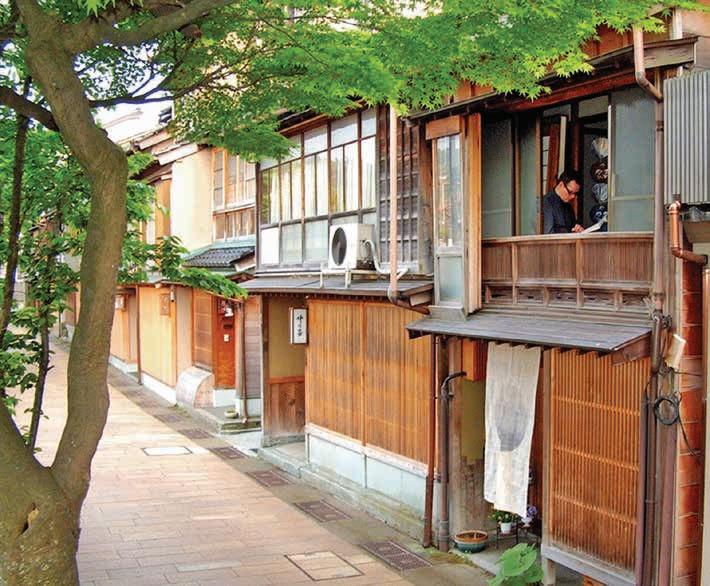

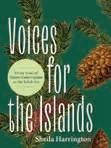
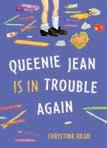



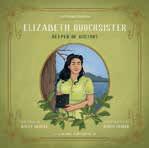



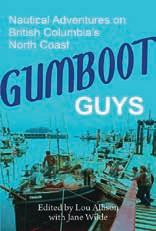
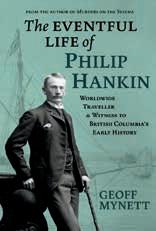

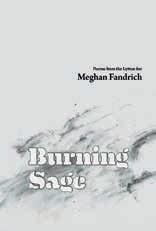



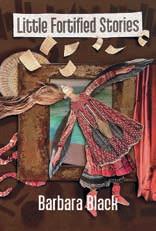

Journey after Midnight: A Punjabi Life: From India to Canada by Ujjal Dosanjh (Speaking Tiger/Sandhill $26.95)
BY GENE HOMELAn independentminded person from an early age, Ujjal Dosanjh declares “Mine is the soul of a rebel,” in his autobiography Journey After Midnight. He journeyed from a poor farming town in India’s Punjab to become British Columbia’s NDP Premier and then Minister of Health in a national Liberal government. How he rose from his origins to triumph is a story of immigrant acculturation and success, but success shadowed by an uneasy sense of harsh conflict and intolerance. The politics he describes are not often pleasant.
Almost the entire book covers the years before Dosanjh became BC Premier in 2000. He was born in 1946, the year before the granting of Indian independence and the murderous and tragic partition of Pakistan and India. He was raised in a small village; his “family was both rural and poor,” he writes. His father was politically involved and passed on to his son Gandhi’s vision of a just, non-violent, progressive society, a vision fading in India’s subsequent decades, but one that Dosanjh valued and brought to Canada.
Dosanjh joined the large tide of Punjabis emmigrating to Great Britain, arriving on the last day of 1964. While he lived in the Midlands and worked at a succession of menial jobs, he strengthened his facility with the English language. But British race and class relations left him “angry and discouraged.” In 1968, passing by the Canadian High Commission in London, he resolved to emmigrate to Canada, where some relatives already lived.
There, in South Vancouver, Dosanjh toiled in nearby lumber mills, including work on the green chain. He found sustenance in his extended family and in an already sizeable diaspora. This community and its NDP politics, “with its social democratic outlook, was a natural home for me in the political landscape of British Columbia,” wrote Dosanjh. Pierre Trudeau , though, remained his favourite Canadian because of his policies toward Quebec nationalism, despite Dosanjh decrying the excesses of the War Measures Act
Ambitious, Dosanjh attended Vancouver Community College at Langara, Simon Fraser University and UBC Law School. As a lawyer, and even before being called to the bar in 1977, he did legal education among new Canadians, and particularly worked for labour rights for contracted farm workers, taxi drivers and janitors. He unsuccessfully ran for the NDP in the 1979 and 1983 BC elections in South Vancouver.
Dosanjh first became more widely known after a 1984 press conference for his vocal opposition to the movement by some Sikh militants for an independent Khalistan—militants appealing to what he considers alienated immigrants—that would “dismember”

How
Ujjal Dosanjh, a fighter for social justice and equity from a poor Punjabi town, rose to become Premier of BC.
India and replace the Punjab state with a “theistic country” opposed to secular values. Using violence and intimidation to oppose the right to free expression, the separatists “threatened to take us back into the dark ages” for “a pipe dream supported by a lunatic fringe,” says Dosanjh. He paid dearly for his opposition: an assassination attempt put him in the hospital where a doctor told him he was lucky to be alive. But he continued to advocate publicly for non-violence and liberal-democratic secular values, placing himself solidly in the Canadian mainstream.
Much of his autobiography is focused on the divisive politics of Indian immigrants in both BC and India. Dosanjh argues against what he considers the petty, bitterly fractious
relations within the Indian community, riven by regional, religious and political schisms. He denounces the growing conflict between Sikhs and Hindus, worsened by the Indian government’s military approach to Sikh militants in Punjab in 1984. Bloodshed inevitably followed. Dosanjh’s reflections on violence have currency given recent events surrounding Khalistani separatism and Hindu-Sikh conflicts in Canada as well as in India.
The internal politics of Canadian ethnic groups “are often quite ruthless,” Dosanjh says. Arguing for open, democratic votes in Sikh temples, he denounces “the pandering by Canadian politicians to faith groups at their places of worship.”
His memoir is at times surprisingly
Ujjal Dosanjh’s novel, The Past is Never Dead (Speaking Tiger/Sandhill $19.95) starts with the well-known quote from William Faulkner: “The past is never dead. It is not even past.” Based on some of Dosanjh’s own youthful experiences, the novel relates the story of a rural Sikh Punjabi family’s resistance to caste. Emigration to Bedford in the English Midlands (where Dosanjh stayed in the 1960s) does not solve the privations of caste, and the courageous struggle against caste continues in England. 9789354474958
candid. He talks about his early, foolish flirtation with revolutionary Maoism in Vancouver (that later came back to haunt him) and his marital tensions. Twice as a young man he became embroiled in allegations of assault and twice he was acquitted.
Following Dosanjh’s election to Mike Harcourt ’s government as an NDP MLA in 1991 in Vancouver-Kensington, which had just a four percent South Asian population, he eventually became NDP caucus leader. Later, he was the first person of Indian origin to become both Attorney General and, finally, Premier in 2000-2001. In 2004 he was recruited and elected as a Liberal MP for Vancouver-South until defeated in 2011, and he became Minister of Health in Paul Martin’s federal government. Dosanjh describes many of the causes of equality and equity he promoted as Premier and in Martin’s cabinet.
Because his autobiography was first published in India in 2016, apparently for an Indian readership, there is much detailed content on the politics of India and the personalities of BC’s South Asian community. Readers intrigued by the BC NDP may find much of interest, along with elements of score-settling with notable rivals and opponents. Some readers may find the family and personal details excessive.
Even more than in 2016, we need voices of liberal democracy such as Dosanjh’s. “Extremists the world over—the enemies of freedom—would like to erase both the modern and the secular,” Dosanjh says. He asserts that writing his autobiography “served as a bridge between the life gone by and what lies ahead,” and stands as a platform for his “continuing ambition that equality and social justice be realized.”
9789354471278
Gene Homel has been a faculty member at universities, colleges and institutes since 1974.
Long-hidden stories that reveal how BC emerged from a period of chaos and transformation from the mid-1850s to after World War I and the Spanish Flu era.
BY MARK FORSYTHEritish Columbia is something of a whippersnapper among provinces. When eastern Canada was getting its act together in 1867, we remained a colony of the Empire. It wasn’t until 1871 that BC took the bait of a national railway. (Newfoundland was the final province to join in 1949.) The Rocky Mountains were a formidable barrier for East-West connections, which meant a natural North-South flow of commerce, people and culture.
BThe gold rush of 1858 deepened those ties to the South. More than 30,000 miners roared in from the US in a single year with most of the food, supplies and tools—not to mention whiskey—arriving on steamers from San Francisco or on the hoof along pack trails from the south. It looked like “Manifest Destiny” would sweep the entire Pacific Slope. “54-40 or Fight!” In no time, BC would slide into the US. So, why didn’t this happen? What kind of BC emerged? What did all of this mean for Indigenous people?
Dive into Untold Tales of Old British Columbia for some answers, an eclectic mix of vignettes from historian Daniel Marshall. The Victoria-based author of the award-winning Claiming the Land: British Columbia and the Making of a New El Dorado (Ronsdale, 2018) draws on 40 columns crafted for the online magazine, The Orca. His timeline spans the fur trade and gold rush eras, through confederation (and BC’s threats of secession), finally touching briefly on the Great War and Spanish Flu era. This “Old British Columbia” includes intersections with the much deeper history of Indigenous people with whom Marshall has worked and collaborated for many years.
Marshall dubs his new collection, a “cabinet of curiosities,” and there’s also a sense that he’s sharing the family photo album. His ancestors travelled north after the California gold rush to chase the golden butterfly on the Fraser River; one farmed on the Saanich Peninsula, another built roads and trails to open up interior gold fields. A seasoned bushwhacker, Marshall revels in locating these routes or a long-forgotten battle site in the Fraser Canyon. Childhood travels with family elders forged a keen interest in BC history, from the ground up.
Untold Tales of Old British Columbia uncovers important contributions by Indigenous guides and interpreters, regales readers with tales of miners defying death and documents fortunes won and lost (including an American financial empire built from Fraser River diggings). There are also bridge build-
ers—in both the metaphorical and physical senses. BC was a multicultural place in 1858 during what Marshall calls “the third biggest mass of gold seekers in human history.” Most people living on the land were Indigenous and were soon to be pushed onto reserves. Some joined the new economy as miners or transporting other gold miners by canoe—some canoes even carried steel and iron for the iconic Alexandra Bridge. James Douglas, of mixed heritage (Scottish & West Indian), had forged strong relationships with Indigenous people during the fur trade era for the Hudson’s Bay Company and had married Amelia Connolly, the Métis daughter of a fur trader. Douglas had witnessed firsthand the American march westward and watched British trading territory dissolve into what is now Washington, Oregon and California. On orders from the Colonial Office, he worked to preserve this remote area as British territory, looked out for the welfare of Indigenous people and at the same time, encouraged settlement. He created alliances with Chinese miners and invited Blacks to escape slavery from the US, to be considered equal under British law. He also began to sign treaties with First Nations. Marshall writes, “Queen Victoria’s paradoxical policy of protecting Indigenous people while promoting progress presented colonial administrators like Douglas with an onerous task: to interpret and implement two mutually exclusive imperial goals.” The consequences are still with us today.
Oa true vancouver islander, daniel marshall reminds us that the preferred route of the future Canadian Pacific Railway was actually to Bute Inlet, which involved island-hopping along multiple bridges to Vancouver Island that would include a toehold on Ripple Rock. (His grandfather lamented this lost opportunity for years.) A rail line from Campbell River was to end at salt water in Esquimalt. Marshall details why it didn’t work out that way, with some fascinating speculation about Joseph Trutch’s conflict of interest that steered the railway to the south: his toll bridge in the Fraser Canyon. “Vancouver Island was not needed as a western entrepôt, nor was the Island essential to the larger Canadian national dream,” writes Marshall. In the end, Canada was prepared to say goodbye to Vancouver Island if it didn’t like the final port choice of Burrard Inlet.
Peering through the lens of history can reveal much about the here and now. Marshall says this narrative is always changing, as are our points of view. An engaging storyteller with a gift for digging up long-hidden stories (many buried in American archival collections), his collection goes a long way toward revealing how BC emerged from a period of chaos and transformation. He is something like a miner panning gravel for nuggets and flakes before they’re swept downstream forever. 9781553807049
Mark Forsythe is author/co-author of four books and a former host of CBC Radio’s BC Almanac.


James Dunsmuir (1851 – 1920), the 14th premier of British Columbia, from 1900 to 1902 .
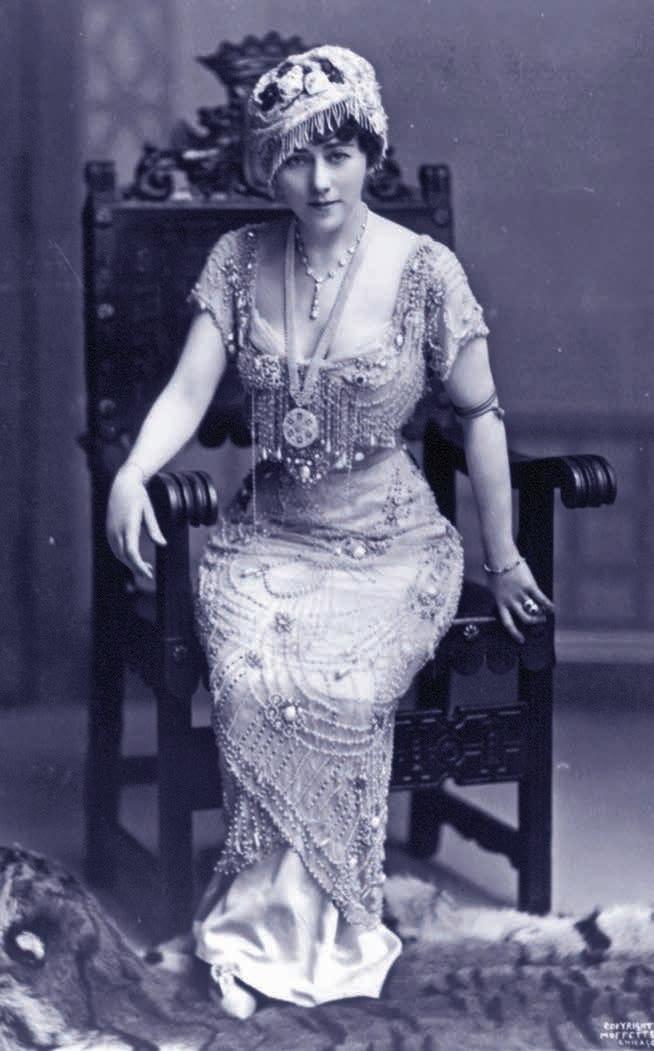
Photographed in 1910, Edna Wallace Hopper (1872 – 1959), an American actress on stage and in silent films. loc , lcus

Over the years I’ve had more than a few occasions to travel from British Columbia down the I-5 Highway to California, and there is one small town that always captures my interest—just by mere mention of its name. “Dunsmuir, California, you say?”
My fellow traveller, a British Columbian who had recently moved to San Jose, raced by the historic railway town that clings to a mountainous edge along the upper Sacramento River, with Mount Shasta looming above. I wanted to stop, but admittedly it can be rather tiresome driving with a historian who demands to halt at each and every corner of historical significance!
“We don’t have time—we have to reach the B.C. border tonight,” he snapped.
I was a bit peeved, though his reaction was understandable, having already detoured through many small-town wonders of California’s northern goldfields.
But Dunsmuir! From that point on I was determined to see this intriguingly named town for myself and subsequently had the pleasure of staying twice in future years.
Who has not heard of the wealthy Dunsmuir family of British Columbia? Surely it is one of the greatest rags-to-riches stories found along the North Pacific Slope. Coal baron Robert Dunsmuir, initially in the employ of the Hudson’s Bay Company (HBC), became famous (some say infamous) for the development of the Nanaimo coal mines, for building the historic Esquimalt & Nanaimo Railway and particularly for erecting a promised home for his wife Joan—today’s magnificent Craigdarroch Castle in Victoria.
But why was this Californian town called Dunsmuir? Having taken a room at a cozy, converted railway caboose, I set out the next day for a bit of exploring, wandering the streets and outskirts. The locale was once called Upper Soda Springs. It was a Hudson’s Bay Company camp stop on the trail system that once extended from B.C. to HBC’s post in Yerba Buena (San Francisco). When the railway was built, the locale became known as Pusher, a name that described the need for additional locomotive force to literally push trains up the steep railbed.
One day Robert Dunsmuir’s son Alexander Dunsmuir (1853–1900), came whistling into town, marvelling at the scenic beauty and pristine waters. It was then that he apparently offered to build the town a fountain if the community officially changed its name to Dunsmuir. The fountain he donated was dubbed “Lady of the Fountain.”
Alexander had been in charge of the family’s business operations in San Francisco since 1878. Away from the watchful eye of his mother, Joan Dunsmuir, Alexander started an affair with his favourite bartender’s wife, Josephine Wallace. The two subsequently lived together for many years, along with Josephine’s two children, William Wallace and Edna Wallace Hopper, who later became a well-known actress.
But the couple did not marry until 1899, delaying the wedding until his father’s death, when Alexander and his older brother, James, finally took control of the family business—and therefore were now free of their mother’s “disapproving eye and financial control.” Alexander and Josephine selected New York for the honeymoon as it coincided with his celebrated stepdaughter’s performance on the New York stage. Just like his father before
him, Alexander promised his newlywed wife a mansion, and construction was completed during their absence.
Until the marriage, Alexander had not only been “living in sin” but had also become an incurable alcoholic. The secretive life he adopted apparently also encouraged companionship with the whiskey bottle. The immense wealth of the Dunsmuirs could not save him, as “his whiskey habits got the better of him and he died during their honeymoon to New York in January, 1900.”
The plan once they returned to California had been that Alexander would cross the marital threshold with his new wife into the Greek-revival mansion—but with his death in New York, Josephine was left to return to the new home on her own. Just imagine waiting over twenty years to get married, then travelling back across the continent to a grand mansion that had been promised you—only now it was empty.
Josephine’s occupation of the California mansion came to a quick end, just a little over a year later in 1901, when she followed her husband to the grave. Enter the Flapper and the Premier, the B.C. court case that scandalized the public.
Alexander Dunsmuir’s famous stepdaughter, Edna Wallace Hopper (1872–1959), was an American actress on stage and in silent films known popularly as the “Eternal Flapper.” She inherited the San Leandro home from her deceased mother’s estate. In short order, not satisfied with inheriting the family home, Hopper began legal proceedings in both California and British Columbia against Premier James Dunsmuir, who had inherited the majority of his brother’s estate.
Edna Wallace Hopper was of the belief that the premier had used undue influence and had denied her mother her rightful share, especially as she had endured a secretive relationship with Alexander for over twenty years. The Eternal Flapper had known the hardships of living with an alcoholic stepfather— after all, she had lived with him and her mother during her younger childhood.
James Dunsmuir entered the B.C. legislature in 1898 and in 1900 became the fourteenth premier—though he resigned in 1902, apparently disliking politics. One wonders whether his departure was influenced by the dramatic court cases brought against him during his premiership.
Big crowds followed the court cases, which involved alcohol abuse, inappropriate behaviour and a Broadway star looking for a piece of the Dunsmuir fortune. The case not only titillated British Columbians but increasingly also scandalized the Dunsmuirs as court actions dragged on for four years. Witnesses were called throughout, testifying either for or against the state of Alexander Dunsmuir’s mental capacity. The case was considered one of the most complicated and expensive in the annals of British Columbia history.
At the trial’s end in 1906, the Privy Council in London, England—then Canada’s highest court of appeal—decided in favour of James Dunsmuir and against both Edna Hopper and Joan Dunsmuir. With the closure of the dramatic trial, the premier, following the example of both his father and younger brother, used the windfall to build his own mansion, Hatley Castle— which still stands, part of Royal Roads University.
Today, Alexander Dunsmuir’s “Lady of the Fountain” is located in a remote and somewhat forgotten corner of California, but in the late nineteenth and early twentieth centuries the town attracted many visitors, like Alexander, to the pristine waters and soda springs for their reputed health restoring properties.
Indeed, the Dunsmuir fountain poured “the best waters on earth” (the official city slogan)—a veritable fountain of youth. And so, it is fascinating that his stepdaughter, increasingly known as the Eternal Flapper, would later build on the success of her acting career to lend her name to a range of age-defying cosmetics. Hopper never did reveal her true age, always maintaining that her birth record was destroyed in the great San Francisco fire of 1906.
While Dunsmuir’s fountain was something of a conceit for a man doomed to die at an early age, his stepdaughter—though defeated by the premier—would ride her own fountain of youth to further fame and fortune.
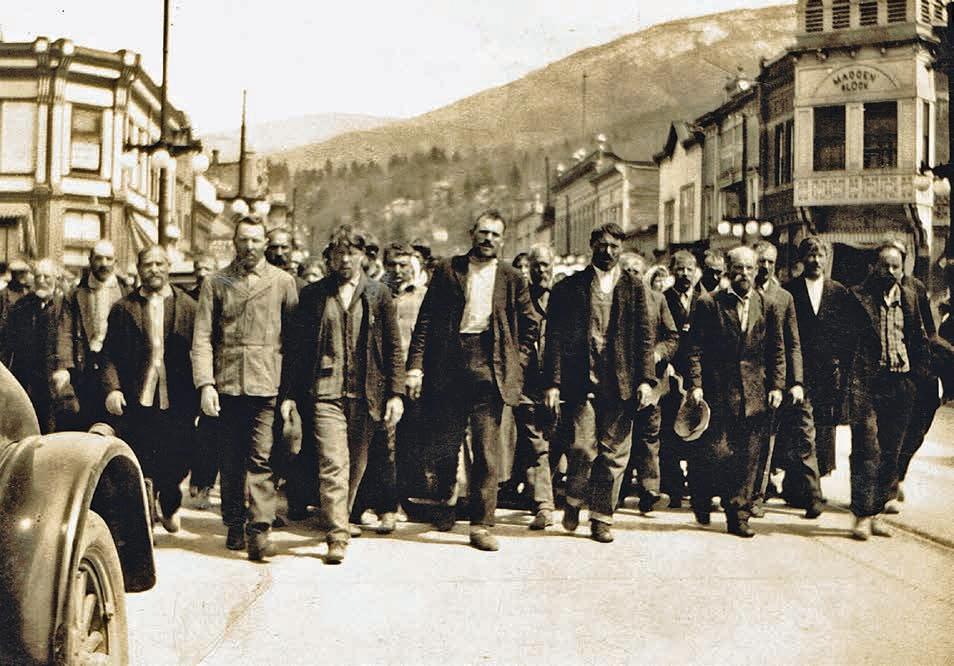
Ason of the Canadian prairie, Pete Maloff (1900—1971) was born with wanderlust. After taking an apprenticeship with a printer in San Francisco at the age of 15, he heard the great Caruso sing, thrilled to the violin of Fritz Kreisler, marveled at prima ballerina Anna Pavlova’s “dying swan” dance. He then went on the bum, joining hobos in catching freight trains in California. In time, Maloff would travel the world visiting fellow pacifists and vegetarians.
For all the masters he saw and heard, though, Maloff was most affected emotionally by the singing of ten members of the Sons of Freedom, a splinter group of the Doukhobors, as they eased their burden of pushing and pulling a cart on rutted roads without benefit of horses or oxen by singing ancient hymns in their native Russian.
“I was under the spell of their singing,” he wrote in They Called Him a Radical: The Memoirs of Pete Maloff and the Making of a Doukhobor Paci-
In 1929, while peacefully protesting the use of tax money to purchase armaments, Pete Maloff (above centre) and his fellow Doukhobors were hosed down by the Nelson fire department. The march leaders, including Maloff, were sentenced to six months of hard labour at Oakalla.
fist, “and I felt these people represented something really great. But exactly what this greatness was, I could not understand.”
Maloff became a noted Doukhobor figure who wrote an extensive history of the group’s time in Canada. In They Called Him a Radical, his granddaughter, Vera Maloff, intersperses Pete’s memoir with her own observations and reflections on researching his background, making this a living history.
The result is a fascinating look at a fractious community whose contributions to British Columbia have been more often overshadowed by disputes with authorities.
Ofacing persecution in czarist russia and in conflict with the Orthodox Church, some 7,500 members of the community moved en masse to Canada
with the promise of free land and an exemption from military service. The first 2,100 arrived in 1899 aboard the three-masted ship Lake Huron, before settling in the North-West Territories (the correct spelling for the area when it included Saskatchewan, Manitoba and large parts of the North, until 1906) in what is now Saskatchewan, where Pete Maloff was born a year later. He had fond memories of early life in a Doukhobor community.
“Communally, we ploughed, mowed hay, made bricks and prepared food,” he wrote. “Everywhere there was turbulent large-scale productivity of community effort. Music, that is, choir singing, spread out to the very horizon wherever people lived. Civilization was far away and we grew up and developed in these primitive, idyllic surroundings.”
The Russian-speaking Christians
were soon in conflict with officials. As pacifists, they refused military service. A few years after their arrival, the federal government insisted homesteads had to be registered individually, not collectively, meaning the Doukhobors would also have to swear allegiance to the Crown, including taking up arms.
Peter Verigin, known by some of his followers as The Lordly, led followers to British Columbia, where some, including Maloff’s parents, lived apart as Independent Doukhobors.
“Even in my earliest days,” Maloff wrote, “I felt an extreme aversion to all cruelty, licentiousness and other moral decadence into which those who had left the community had begun to fall. In this category were my own parents.” At the same time, a splinter group of radical orthodox believers, known as the Sons of Freedom, burned their own homes and possessions, as well as those of others. In 1924, Verigin was killed when his railcar exploded. Whether the incident was an accident or, more likely, assassination is debated to this day, as is the identity of any possible perpetrator. Soon after, police and armed vigilantes in the Kootenays seized Doukhobor property, beginning several decades of strife.
Maloff published a pamphlet in 1950 during a period of turbulence. He wrote: “It seems to me that this policy of assimilation, especially when done by violence, coercion and intimidation,
“
peared to
me
the
community ap-
to
be the realization of world brotherhood, the highest symbol, but
at
other times the community appeared to me to be a spiritual prison where one was obliged to obey orders and where even the shadow of freedom was absent.
” Sometimes …
— PETE MALOFF
is one of the chief causes of Doukhobor unrest.”
The Sons of Freedom engaged in further acts of arson and bombings as well as such civil disobedience as nude protests. In the 1950s, the Social Credit provincial government forcibly removed children from their parents and communities. Some were kept in a former sanitorium where they were only allowed to meet adult relatives through a chain-link fence. Earlier this year, Premier David Eby apologized for the British Columbia government’s action.
Maloff was a thinker and a questioner, not simply a follower. He balked at restrictions on his personal philosophic and religious explorations.
“Sometimes Peter Vasilievich [Verigin] and the community appeared to me to be the realization of world brotherhood, the highest symbol,” he wrote, “but at other times the community appeared to me to be a spiritual prison where one was obliged to obey orders and where even the shadow of freedom was absent.”
World peace was Maloff’s cause, which he pursued from his home in Thrums, a hamlet along the Kootenay River. After selling rare pieces of Doukhobor literature to the library at the University of British Columbia, he used the proceeds to finance a trip to visit several far-flung correspondents.
He would die at 71, sitting beside his wife, Lusha, on a bus while traveling to
visit a friend in the United States, his wanderlust sated only by death.
Oin 1929, pete maloff was one of several Doukhobor men who led a peaceful march through the streets of Nelson to protest the use of tax money to purchase armaments. The marchers were hosed down by the fire department and the leaders, including Maloff, were sentenced to six months of hard labour at Oakalla. Later, while under house arrest, he wrote this memoir, so wonderfully placed in context by granddaughter Vera Maloff, the author of Our Backs Warmed by the Sun: Memories of a Doukhobor Life (Caitlin Press, 2021), an insightful collection of reminiscences, social history and oral history.
Last October, Vera joined other Doukhobors in reciting prayers and singing hymns and psalms in honour of Peter Verigin, a memorial service conducted now for 99 consecutive years. A series of monthly lectures are being held at the Brilliant Cultural Centre and streamed online to mark the pending centenary.
The history told in They Called Him a Radical is part of a story not yet concluded. 9781773861340
Tom Hawthorn’s most recent book is The Year Canadians Lost Their Minds and Found Their Country: The Centennial of 1967 (Douglas & McIntyre, 2017).

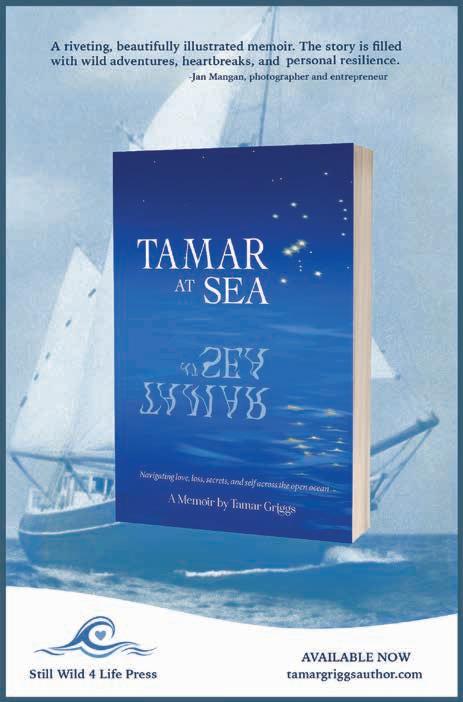
“A
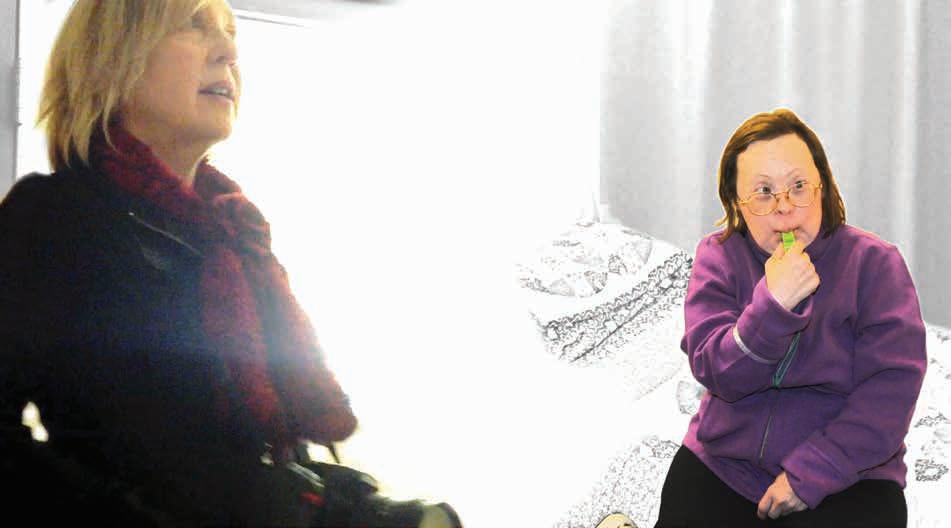
When an idealistic activist objects to her siblings’ plan to ship their disabled sister off to a nursing home, she’s forced to choose between family and her sister’s freedom.



FreeingTeresa.com

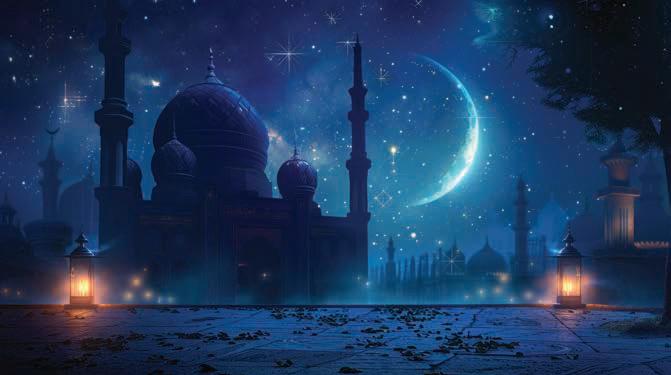



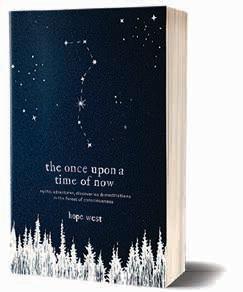
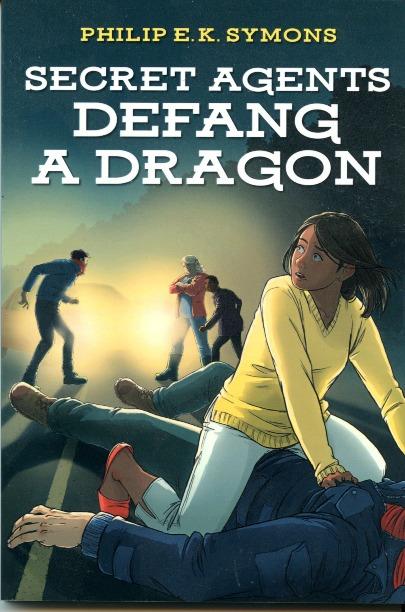
At a hotel in St Andrews, New Brunswick, the federal government of Canada is plotting to turn Canada into a dictatorship. Four teens learn of the plot. One is from a country where such a plot was foiled. She and her fellow “secret agents” enlist the help of four adults, and together they set out to rescue Canada from dictatorship..
This story is fiction, but much is based on facts provided in end notes.
This book and two others, Pender Harbour’s Secret Agents and Secret Agents’ Dutch Treat are available across Canada through Red Tuque Books: www.redtuquebooks.com
Indictment:
The Criminal Justice System on Trial by Benjamin Perrin (UTP $32.95)
In 2018, UBC law professor, Benjamin Perrin , received a handwritten letter from an Indigenous man in prison. One of the lines in the letter haunted Perrin: “If you want to turn a man into an animal, put him in a cage without the resources to build him back up.” It so happened that Justice Canada had launched a public consultation around the same time Perrin received this letter. The key question was, “If you could design a new criminal justice system from scratch, what would it look like?”
These two events inspired Perrin to write Indictment: The Criminal Justice System on Trial. His research involved interviewing people who work in Canada’s justice system as well as people who had experience in the criminal system (both survivors of crime and incarcerated people). Perrin learned more from his research he says, “than in over 20 years working in and around the criminal justice system.”
BC BookWorld caught up with Benjamin Perrin for the following Question & Answer session.
OBC BookWorld: In your engagement with various people, from incarcerated individuals to families affected by the system, were there specific stories that deeply impacted your understanding of the flaws within the criminal justice system?
Benjamin Perrin: I was shocked that the majority of people who were incarcerated entered the system as very young people. “Courtney” (whose name has been changed to protect her privacy) spent 25 years in prison from the ages of 12 to 39 years, in and out, in and out. Her traumatic childhood led her to become addicted to alcohol and drugs as a young kid. Run-ins with police soon followed. When the trauma of Courtney’s incarceration finally broke her and she attempted suicide, she was briefly given medical treatment only to be returned to segregation for three months. The cruelty, heartlessness and ineffectiveness of our system was painfully brought home. I thought it was important to let people tell their stories in their own words in this book, then talk about what the stats and studies and professionals had to say
BCBW: The role trauma plays in substance abuse situations and in the lives of most people engaged in criminal activity is a recurring discussion throughout the book. Could you elaborate how the current justice system fails to address this critical aspect?
Benjamin Perrin argues that Canada needs a new approach to its criminal justice system.
BP: Trauma is pervasive throughout the criminal justice system. From victims of crime, to the people who harmed them, to the professionals working in the system who experience vicarious trauma. We can’t understand any interaction in the system without understanding trauma. The impact of intergenerational trauma, particularly impacting Indigenous and Black people, cannot be overstated either.
Someone who is victimized as a child is 50% more likely to harm others later in life and eight times more likely to be sexually abused again. Childhood trauma is an almost universal experience of people incarcerated. And the system compounds that trauma. At the same time, survivors experience “secondary
victimization” or re-traumatization in a system never designed for them. It’s one of the reasons only one-third of crime is reported and only 5-6% of sexual offences are reported.
BCBW: As trauma-informed lawyering is crucial in your vision, how can legal professionals practically integrate this approach into their practices and advocate for its broader adoption within the legal education system?
BP: I’ve been teaching about trauma in my criminal law classes for the last few years. It’s something I never learned in law school as a student and really should have. I think about the experiences I had of depression and despondency in researching, teaching and being involved at courts

“There are better ways to keep us all safer than discredited ‘tough on crime’ policies or simply tinkering with the status quo.”
BENJAMIN PERRIN
dealing with incredibly violent and horrific crimes. Police, lawyers and judges are predominantly interacting with disproportionately traumatized populations. This impacts how these professionals will either understand or exacerbate the trauma they encounter. It goes far beyond training to create new and better ways to address harm in our society. That’s what I spend the second half of Indictment exploring in concrete ways.
BCBW: How does restorative justice differ from the traditional criminal justice system and what are the key principles underlying the restorative justice approach?
BP: Survivors of crime deserve to be seen, heard and involved. Crime isn’t a “wrong against the state”—it is a wrong against the people who were assaulted, robbed, threatened or whose loved ones were murdered. Most people assume victims simply want harsh punishment. But research shows above all they want information and to participate and have their voices heard.
“Collaborative Justice Program: Restorative Justice Ottawa” has been offering restorative justice services for violent crime for decades. It has higher victim satisfaction and lower recidivism rates of people who harmed them, despite limited funding. We need to mainstream restorative justice as the primary means of resolving conflict in our society and to support people who experienced harm, and people who caused them harm, to heal.
BCBW: Indictment clearly argues that the Canadian justice system must undergo radical change from the roots to help enrich the lives of those incarcerated, instead of causing them more pain and trauma. But deconstructing a rigid system that has been in place for decades and revolutionizing it in a completely different way is no easy feat. What are some future plans that you are working on to ensure that your vision for Canada’s justice system comes to fruition?
BP: In addition to publishing Indictment, we’ve also launched a podcast by the same name on all major platforms. It won a “best podcast” award and each episode tells the story of someone profiled in the book. It’s a behind-the-scenes look that readers have said they love, and it also helps us reach a broader audience. I’m also excited that the Law Foundation of British Columbia, which has financially supported this work, has extended a new research funding award for us to continue this important work. My students and I plan on doing even more work to help Canadians see there are better ways to keep us all safer than discredited “tough on crime” policies or simply tinkering with the status quo.
9781487506278
Senuri Wasalathanthri is a Vancouverbased publishing assistant, writer and student.
I Only Read Murder by Ian Ferguson and Will Ferguson (HarperCollins $24.99)
BY JOHN MOOREDetectives are like eggs; not every one needs to be hardboiled. With four Stephen Leacock Medals for Humour between them, brothers Ian and Will Ferguson could be expected to whip up something as homey and comforting as scrambled eggs on toast without anyone mistaking the ketchup for the signature red sauce of murder. As one of the main characters in I Only Read Murder observes, such mysteries are known in the trade as “cozies”...“You know, an amateur sleuth, female, usually plucky, with a small-town murder solved in the penultimate chapter and equilibrium restored. That sort of thing. They’re surprisingly popular.”
They have been since Agatha Christie’s wise spinster, Miss Marple, busied her old body by exposing the bucolic English village of St. Mary Mead as the unlikely but leading candidate for Most Homicidal Hamlet per capita on the planet, soon to be followed by Midsomer (a fictional English county) in Caroline Graham’s Chief Inspector Barnaby novels. Even our own quiet Sunshine Coast town of Sechelt (a real place) is depicted in the mysteries of L.R. Wright. The Fergusons cheerfully invite comparisons to Angela Lansbury’s long-running TV turn as Jessica Fletcher in Murder She Wrote, based in the equally murderous municipality of Cabot Cove, Maine.
“Cozies,” notes producer Alan Zabic in the Ferguson brothers’ tale, are the bread-and-butter format of MOWs (Movies of the Week) produced for network and cable TV and now streaming services. Zabic has come to the bucolic Pacific Northwest town of Happy Rock on Tillamook Bay to shoot one starring Miranda Abbott, who had starred in a weekly TV mystery series called Pastor Fran Inves -
AThe Ferguson brothers turn their humorous gaze to the fictional BC town, Happy Rock, where a death is investigated by a fading TV star.
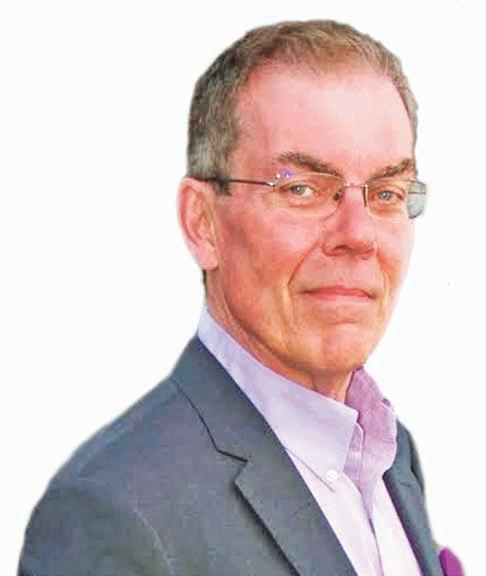
Ian Ferguson will appear at the Denman Island Writers Festival, July 19 - 21.


benefits? A simple question on the face of it, but Arthur Conan Doyle created Sherlock Holmes to demonstrate that the answer is often an almost-invisible web of hidden human emotions.
When Harry Tomlin dies immediately upon making an unconventional entrance at the big press conference (convened in the lobby of the suitably haunted old Duchess Hotel), the mystery train picks up speed. Sensing his star was fading, plagued by crippling alimony payments and a looming scandal in his signature salad dressing company, did Tomlin choose to make a sensational exit, a Grand Guignol finale?
Was he hooked offstage like a washed-up vaudevillian or knocked off by a mystery man who looks like a mobster from central casting? Was it suicide or murder?
tigates a decade previous, only to be dropped like a cold yam fry when the industry deemed her “typecast” and was looking for “fresh talent” (i.e., “younger”) heroines to solve crimes while dressed in wet or improbably skimpy costumes.
Miranda has been marooned in Happy Rock at Bea’s B & B, separated but not divorced from former Pastor Fran screenwriter, Edgar Abbott, who now runs the town’s specialty mystery bookstore, I Only Read Murder. She is as thrilled by the handsome Alan Zabic’s attentions as by the overly-generous contract he offers her. The icing on the cake is that her co-star is to be none other than Harry Tomlin, the A-list leading man universally acclaimed as “the Nicest Actor in America.” Even the director and cinematographer are trending “artistes” fresh from winning awards at European film festivals.
The town of Happy Rock is totally starstruck, especially since many locals are hired by the production.
Only Miranda’s devoted personal assistant, Andrew Nguyen, finds it suspicious that so much talent and money is being lavished on a small-screen Movie of the Week.
Like ancient Roman lawyers and all good detectives, Andrew wonders, cui bono? Who
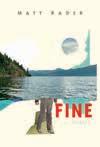
In a display of “the show must go on” determination (Hollywood-speak for “our paycheques are at stake”), hapless Harry is instantly replaced by Poe Regal. Pronounced “ReGAL,” Poe is a bloated former action star and ex-Miranda Abbott love interest who, even she admits, would have to be two hundred years old if he had spent as much time as he claims in secret Asian ashrams and dojos mastering obscure martial arts.
Between cataloguing the quirky residents of a tiny town composed almost entirely of eccentrics and sending up the pretentious duplicities of the entertainment industry, the Fergusons have themselves a field day in what the military call a “target-rich environment.”
What saves I Only Read Murder from being just a satirical comic romp is that it’s genuinely a good mystery. Many of the characters are revealed to have motives not apparent at first and the plot has more twists than a granny knot. That said, place some pillows on the floor around your favourite reading chair or couch for when you fall out of it laughing.
Oian and will ferguson also co-wrote How to Be a Canadian: Even If You Already Are One (D&M, 2001/2007). Individually, Ian Ferguson wrote The Survival Guide to British Columbia (Heritage, 2019). He is a creative director in the film and television industry and lives in Victoria. 9781443470766
John Moore reads and reviews books in Garibaldi Highlands.
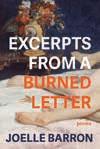
“ Both grand in scale and gorgeously, lyrically intimate, More Richly in Earth holds readers close as they follow Bowering’s search for a myth-shrouded Scottish poet. Yet at its heart, it is something more powerful, more mysterious.”
–Patrick James Errington, author of the swailing
“ More Richly in Earth has an intricate structure, weaving together memoir, conversation, poetry, and literary investigation. As we accompany Bowering on her search for Mary MacLeod, we are released with her into mystery’s delight.”
–Jan Zwicky
Hardcover | $34.95 | 282pp
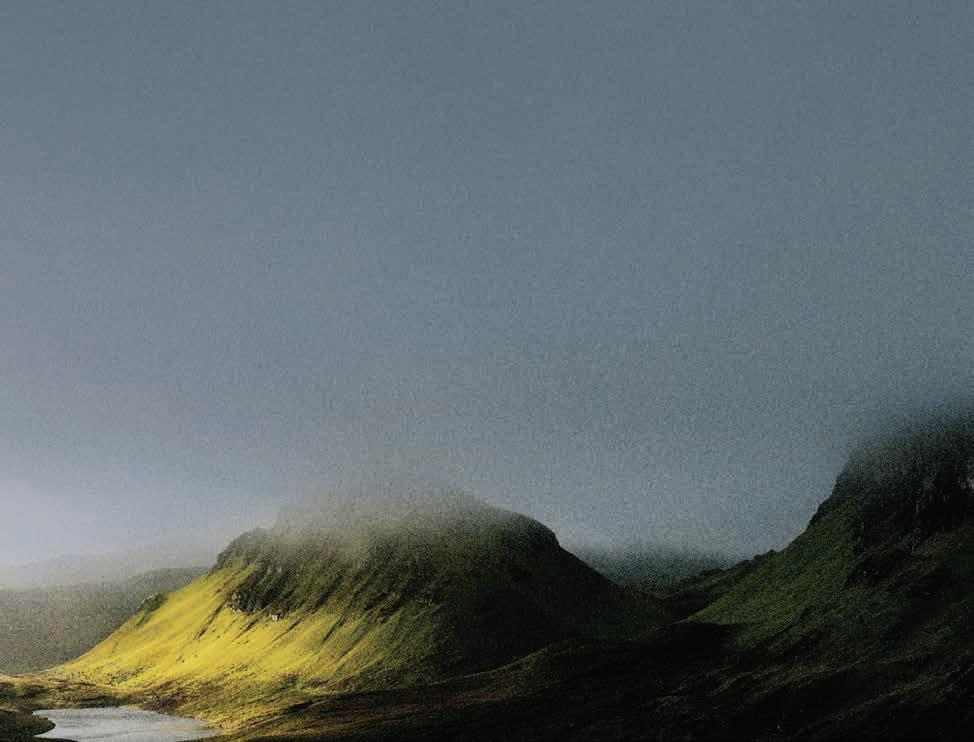
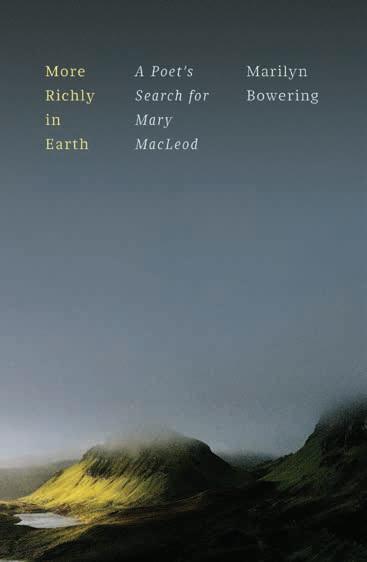

Essential reading for your B.C. summer
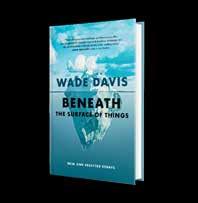
Wade Davis A timely collection of essays unveiling the complex layers of global challenges and the importance of anthropology.
Find in the BC Ferries Gift Shop or Your Local Bookstore or at greystonebooks.com
978-1-77840-138-1 adult
978-1-77840-044-5
children’s books

Peter Wohlleben & Belle Wuthrich An activity guide for your next outdoor adventure.
978-1-77164-969-8
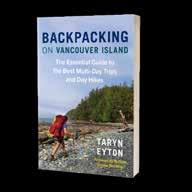
Taryn Eyton Discover 35 of Vancouver Island’s best day hikes and overnight trips
978-1-77840-010-0

Celebrates skateboarding, family, and perseverance. 978-1-77164-610-9
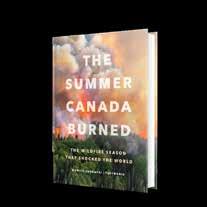
Monica Zurowski & Postmedia The dramatic story of Canada’s wildfires in 2023
978-1-77840-187-9

Reveals wisdom mushrooms have to teach us. 978-1-77840-077-3
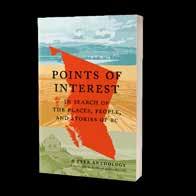
A Tyee anthology An enchanting collection of essays from thirty local BC writers.
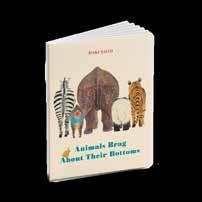
Maki Saito Encourages self-love and body positivity. 978-1-77840-151-0
The climate crisis is on Andrea Scott’s mind, winner of this year’s Raven Chapbooks poetry contest, yet she focuses not on woebegone thoughts, but instead offers something more akin to light and hope in her new chapbook, In the Warm Shallows of What Remains (Raven Chapbooks $22.95).
She begins with a prose poem referring to PK Page (1916–2010) whose poem Planet Earth was chosen by the United Nations in 2001 to be read simultaneously in New York, the Antarctic and the South Pacific to celebrate the International Year of Dialogue Among Civilizations. “Dear P.K. Page re: care instructions for our beloved Planet Earth,” writes Scott as she draws us in to think about the Earth and how “we haven’t loved it properly.”
A mother and teacher based in Victoria, Scott uses cheery images such as dreaming of flying while “thinking / happy things” with “echoes of Peter Pan.” One of Scott’s mentors and teachers, Susan Musgrave, who made such a splash with her latest poetry collection Exculpatory Lilies (M&S, 2022), says of Scott’s poems, “Plum trees, steakhouse neon, dolphins with gummy smiles, hailstones, sex with someone new. These poems surprise and delight at every turn, like a good energy bar chock full of umami for the soul.”
Andrea Scott t

Tackling life’s big issues in words.
Scott seamlessly mingles catastrophe with humour in “While the World was Ending,” during which she says she “made soup to move along / three chicken carcasses in Ziplocs in the deep freeze.”
Scott’s work has appeared in The Dalhousie Review, The New Quarterly and The Humber Literary Review. She was longlisted for the 2023 Room Po
OPatrick Grace explores queer self-discovery from childhood to adulthood in his debut book of poetry, Deviant (U. of Alberta Press $19.99), moving between themes of love, fear, grief and violence in same-sex relationships.
system’s bias against gay men.
Grace divides his time between Vancouver and Victoria. His poems have been published in EVENT, The Malahat Review and Prairie Fire He has published two chapbooks: a blurred wind swirls back for you (2023) and Dastardly (2021).
9781772127416
OChloe Cocking, who currently resides in Maple Ridge, has lived in Metro Vancouver for most of her life. After two short story collections, a novel and a debut poetry book, Cocking has released her second poetry collection, world without end (Filidh $19.46), which she was inspired to write during the height of the pandemic lockdown.
“I stayed inside, along with my person and my cat, in a very tiny apartment,” she says. “I worked from home. I had zoom meetings. I played scrabble with my person.” And she wrote 30 poems in 30 days.
“Some are very obviously ‘covid poems.’ Others are poems written during covid (rather than poems about covid).
“What bubbles to the surface when you coop up a poet during a pandemic?” muses Cocking. “They think about things, drilling deeper ever deeper into themselves. This book contains some of the results.”
9781927848-96-8

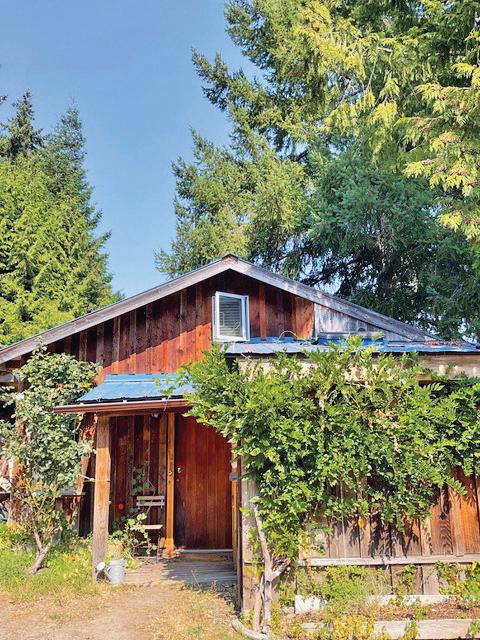
Grace’s confessional poetry captures intense emotions shaped by both beauty and brutality. His collection also describes coming-of-age identity struggles, highlighting queer love as a coping mechanism against fear and cruelty. Later poems probe psychological trauma, stalking and the justice
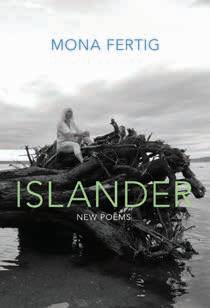
9781772142389
Permission to Settle (Anvil $20) by Vancouverite Holly Flauto is a series of memoir-based poems on the anxiety of immigration. Written from the perspective of a modern-day settler coming from the US to Canada, the poems investigate the implicit biases of the application forms. The reality of a life lived does not tick boxes so easily.

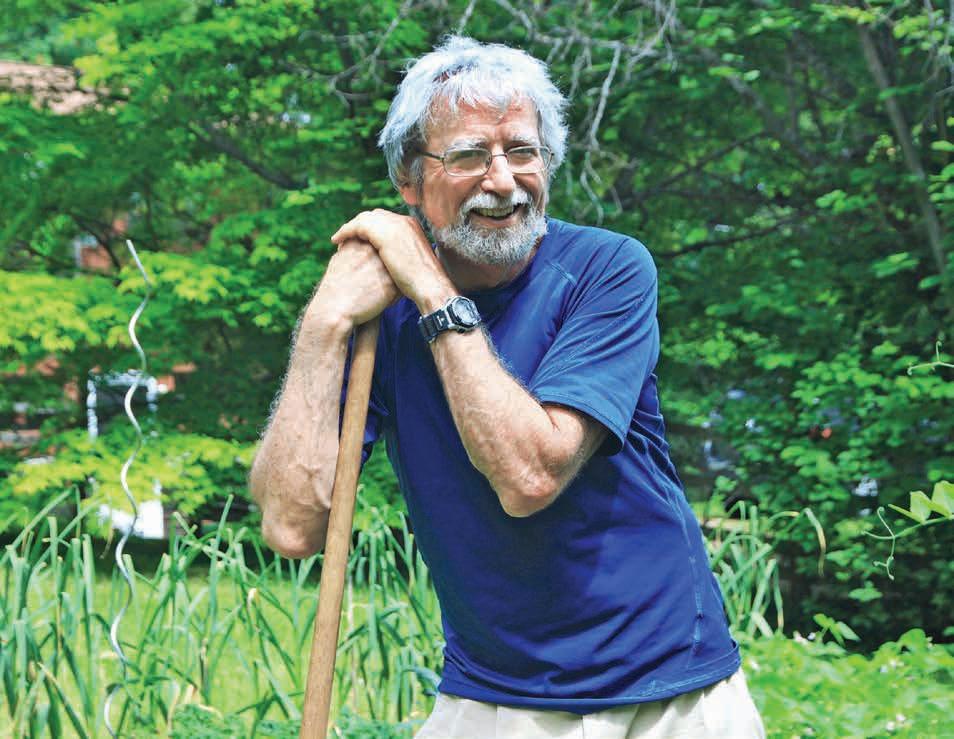
The Road to Appledore: Or How I Went Back to the Land Without Ever Having Lived There in the First Place by Tom Wayman (Harbour $26.95)
BY SONJA PINTODescribing an almost giddy joy that comes with rural living, Tom Wayman writes, “I was suffused with the happiness I had known as a child now and then: pure enjoyment just of being alive.” Wayman, a poet and sometime college instructor, recounts several decades of his life in interior BC as well as the practical challenges that come with the transition from city to country living in The Road to Appledore
In 1989, Wayman moves to Winlaw, an area just northwest of Nelson, in search of a Henry David Thoreau-like escape into nature writing (Walden; or, Life in the Woods, 1854) and to take space from an unsatisfactory partnership. He purchases a modest cabin on a plot just under nine acres. His property, which he affectionately terms “Appledore,” is named after a line from an A.A. Milne poem combined with the name of a road adjacent to his home called “Appledale.”
The Road to Appledore spans decades of Wayman’s time at Appledore, from the late 80s to the present and documents changes that come to the surrounding area such as new developments and franchises. With wit and humour, Wayman describes the metamorphosis of even regular coffee shops to “an espresso tsunami” as “a
Tom Wayman finds a contemporary rural paradise, including apples and snakes.
consequence of the Starbucks earthquake,” rendering the old style of coffee bars obsolete.
His memoir at times reads something like a beginner’s instruction manual for transitioning from urban to rural living. Establishing and maintaining the Appledore property is no piece of cake: appliances and amenities regularly break down and must be fixed, from washers to wells. Wayman recounts an expedition to fix a leaky water distribution box, the tribulations of party-line phones and the worries of fire season smoke, to name but a few examples.
Wayman’s approach is pragmatic and practical, reflecting his systematic attention to detail with the repairs and maintenance of his home. This meticulousness, too, is a lesson imparted by Appledore. At times, Wayman imagines the place speaking to him: “‘I keep telling you: pay attention to what you’re doing,’ the cabin would chuckle … ‘Apply this maxim to every facet of your life, and you will be rewarded. Fail to do so, and, more than metaphorically, you’ll find yourself in the dark, hungry and cold.’”
But this insight hardly masks the difficulty of repetitive tasks necessary to rural living: “snow-clearing becomes
less appealing when the white stuff descends day after day. By the third or fourth snowy day in a row, I feel a kinship with Sisyphus.” Yet, Wayman still gleans wisdom from the work, he writes, when “issues do arise, I remind myself that there are no paradises without snakes.” Indeed, Wayman recounts many such “snakes,” from seeing literal garden snakes to surviving a face-toface encounter with a bear cub in his kitchen.
Interspersed throughout the book are snippets of poems and prose from writers both well-known and local, demonstrating the rich and interconnected literary scene of which Wayman is part. He also excerpts his own writing from previous collections and reviews his early literary career, a time when “poems were deemed vital cultural artifacts.” Lamenting that poetry has become less culturally significant, he cheekily names his flower bed the “Grave of Literary Ambition,” complete with a plaque that reads “R.I.P. Literary Ambition 1966-89,” the dates representing the start of his creative writing in graduate school to his move to Appledore.
Struggling to reconcile the end of a long-term partnership, Wayman describes how living at Appledore impacts
his perception of past relationships. He devours one self-help book after another before meeting a therapist who leads him to a breakthrough. “I was stuffing away my emotional responses to people and events in my life,” he learns. He attributes this revelation partly to his lifestyle change, musing: “would I ever have gathered this practical, angstreducing knowledge if I hadn’t moved to the country?”
These insights on interpersonal relationships accompany new knowledge about how to sustain himself on the land. Wayman nurtures a plethora of perennials, fruit trees and edible plants on his property and finds himself “savouring the sharp tang of one of my own radishes on my tongue,” an experience that is “entirely different from sampling the generic vegetative blandness of a purchased radish, even one marketed as organic.”
Wayman develops an appreciation for simple things that city folk often take for granted: “as with water from my well, I’m grateful each time I hoist a glass of gravity-fed water. I’m certainly aware this water hasn’t appeared by magic. Yet given all I know about how much can go wrong between the creek and Appledore, when such water splashes out of a faucet, I can’t help but feel some magic is involved.”
It is this sense of magic that drives Wayman’s narrative. The Road to Appledore is a contemplation of Wayman’s relationship to home, and the humility, reverence and care needed to find that true sense of belonging.
9781990776632
Sonja Pinto is a writer, photographer, printmaker and book reviewer. They reside on the unceded territories of the lək
peoples (Victoria, BC).
Zia’s Story by Shahnaz Qayumi (Tradewind $14.95) Ages 9–12
BY BEVERLY CRAMPWriting for young readers about the impact of a battlescarred country on families and communities is a delicate undertaking. The destructive nature of such a backdrop must be detailed in a serious way without falling into the use of overly violent descriptions that could traumatize an underage reader.
Shahnaz Qayumi accomplishes this difficult balancing act in her debut novel Zia’s Story (Tradewind $14.95), with illustrations by Nahid Kazemi The story is set in the aftermath of the Russian withdrawal from Afghanistan in 1989 as the country descends into civil war. Rule by the oppressive Taliban puts restrictions on women working outside the home and girls attending school. Many men disappear, never to be heard from again if they fall out of favour with the Taliban, or for no known reason at all.
We meet young Zia as he flies kites with his best friends. Kites are special playthings for Afghani children, but it will be the last carefree evening for Zia for a long time. Back home, just before he falls asleep, gun-toting soldiers appear at the door to take away Zia’s father.
“You are now the man of our family, Zia,” his father whispers before he is forced out of the house. “Until I return home. Take care of your mother.” Zia and his mother will never see him again.
For a short period, Zia and his mother continue living in their Kabul home. Before long, she cannot work when the Taliban decree that women are not allowed outside alone. To make a living for their household, Zia drops out of school to sell food in the streets that his mother cooks.
Qayumi’s words are simple but powerful as she tells of the increasing oppression: “Soon there was no more public music or dancing. Instead, there was a curfew. Police stood at every corner. Men had to grow their beards. Women had to cover themselves from head to toe.”
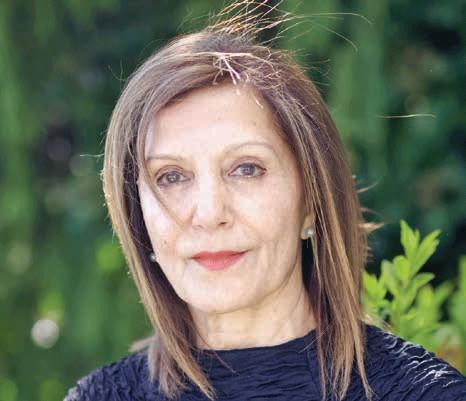
Shahnaz Qayumi sets her story in the aftermath of the Russian withdrawal from Afghanistan in 1989 as the country descends into civil war.
Eventually, Zia and his mother flee under cover of night. It’s a harrowing and dangerous journey out of Afghanistan but they make it to Pakistan. Even here, as vulnerable refugees, it is dangerous. Zia and his mother begin saving to get a visa to Canada. At one point, their savings are stolen and Zia’s mother falls into a depression. But Zia is persistent and eventually they arrive in Canada. After a brief one-night stay in Ottawa, they travel to Toronto and then Calgary, where they settle.
On the first day at his new school, Zia sees pictures of Afghanistan hanging on the walls. “I stood in front of the first frame, with the full blue sky of Kabul. Scattered across the sky were the most beautiful, colourful dazzling kites. I imagined I could see my friends Hussain, Timur and Rustam flying three of them,” he says.

For his first homework assignment, Zia must write about his homeland. His confusion and loneliness are clear as Zia struggles to come to terms with what he has lost. “I don’t know how long I have been at my desk.
My thoughts are thousands of miles away, and my notebook is still empty. What can I write about my life in Afghanistan?” Qayumi provides no easy answers in her revealing look into the life of a refugee family.
Shahnaz Qayumi was born and raised in Kabul. Zia’s Story is her first book for young people and is closely based on other Afghans and her as a refugee from war-torn Afghanistan. After fleeing Afghanistan, she found refuge in Canada. She now lives in Vancouver and teaches at Langara College.
9781990598142
born in vernon on june 17, 1923, Larry Kwong grew up listening on the radio to the famous hockey announcer, Foster Hewitt, as he called National Hockey League games. Kwong played hockey on homemade ice rinks with discarded hockey sticks from the local arena, skates too big for him and frozen horse droppings for pucks. He soon became known as a local hockey phenom, often scoring all the goals in the games he played. He dreamed of getting into the NHL despite the discrimination faced by people of Asian descent. Against all odds, he managed to play one shift for the New York Rangers in 1948, breaking hockey’s colour barrier. More than 70 years later, his story is only starting to be recognized and is the subject of Chad Soon and George Chiang’s book for ages 9–12, The Longest Shot: How Larry Kwong Changed the Face of Hockey (Orca $24.95) with illustrations by Amy Qi . Chad Soon also dreamed of becoming an NHL star but realized he wouldn’t be the next Larry Kwong. He is now a teacher in Kwong’s hometown of Vernon.
9781459835030

n endearing dog is at the heart of D.R. Lucy’s kidlit title, Lessons from Tokyo: On Friendship and Learning with a Shiba Inu (self-published $31.99), with illustrations by Angela Gooliaff. A girl named Lucy relates the lessons she learned from her past dog named Tokyo, such as minding your manners, being a true friend and giving lots of love and hugs. D.R. Lucy is a professional writer and photographer. She wrote Lessons from Tokyo to pay tribute to her beloved dog for, she says, “all the wonderful things he did that made her life happier and more meaningful.” A follow-up book is in the works.
9781738972616
Did you know that a bunch of sea lions is called a bob, geese make up a wedge and that a group of jellies are known as a bloom? Babies, toddlers and their adult readers will discover these facts and more in Roy Henry Vickers’ A Flock of Gulls, a Chorus of Frogs (Harbour $14.95) co-authored with Lucky Budd. Featuring the artwork of Vickers, the renowned Indigenous artist, this board book is an artwork in and of itself. The bright colours are augmented with tactile embossed pages in the descriptions of animal life of the West Coast. This new title is part of the bestselling First West Coast Book series, which has sold over 100,000 copies. 9781990776502
eventeen-year-old Lucy “Lucky” Graves is a determined rugby player, devoted to her championship team until a devastating ankle injury shatters her dreams of a scholarship and a pro career in Brooke Carter ’s novel, Lucky Break (Orca $10.95) for ages 12–17. Lucky finds she is lost without her place on the rugby team. She also faces uncertainty about her future, which brings on anxiety, OCD and trauma from her past that re-emerges. But female friendship comes to Lucky’s rescue, despite the challenges of competitive sports. Carter also played rugby in her teens until she suffered an injury. Now she participates by being a spectator on the sidelines and using the sport as a backdrop for this book. “Hard work beats luck any day, it’s true,” she says in her acknowledgments. “But it’s also true that I am fortunate. I get to live my dream, writing young adult fiction,” she adds.
Dive into the scrum with rugbyplaying girls, Pacific Northwest plants, Indigenous activism, mushrooms and nonbinary babies.

9781459839724
O“Learning about plants might seem like a waste of time when you have homework to do or a snap to send. But with an uncertain future due to climate change and a natural world that needs caring for, knowing about plants can change—and maybe even save—your life,” writes Philippa Joly in A Kid’s Guide to Plants of the Pacific Northwest: with Cool Facts, Activities and Recipes (Harbour $26.95) for ages 6–12. From digging up roots to crafting plantain salve, Joly illustrates the wonders to be found in nature while encouraging selfconfidence in the wilds and inspiring environmental stewardship. With over fifty plant profiles, including coastal Indigenous uses and fun activities, Joly combines her expertise as a herbalist and outdoor educator to create an ac-
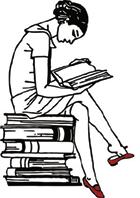

cessible guide to the natural world. Her title has attracted the praise of other plant gurus such as ethnobotanist, Nancy Turner, who describes Joly’s book as “a rich compendium of plant portraits and descriptions, personal stories, recipes, games and hands-on activities—like making tea from Yerba Buena or making a root-digging stick of Oceanspray. Philippa’s obvious love of kids, plants and the natural world shines through—and it is catching.”
9781990776212
OIt’s easy to underestimate mushrooms but these small fungi have a lot to teach us in Kallie George ’s Mushrooms
Know: Wisdom from our Friends the Fungi (Greystone $23.95), for ages 4–8. With vibrant colour illustrations



George
Angie Abdou
David Bergen
Kevin Chong
Ian Ferguson
Will Ferguson
Des Kennedy
Lenore Newman
Angela Sterritt
Frank Tester
Siila Watt-Cloutier
Iona Whishaw
by Sara Gillingham , George showcases over fifty mushroom varieties and shares fun facts such as some mushrooms are so strong, they grow through concrete and others can light up in the dark (they’re bioluminescent). George, who has written 40 books for children, grew up on the Sunshine Coast where she loved exploring the woods and mushroom foraging with her family. Vancouver-based Gillingham has illustrated more than 25 titles for children.
9781778400773
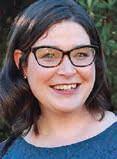
Written by Dr. Lindsay Herriot, It’s a They! (Orca $10.95) for ages 3–5, is a board book celebrating a new baby and their genderneutral pronouns through rhymes and inclusive photographs of children from different ethnicities. Excited siblings narrate the story, expressing love and joy for the baby, regardless of their eventual gender identity. The book encourages conversations about gender while offering a departure from traditional binary perspectives. Herriot is a full-time special education teacher in Victoria and an adjunct professor in the School of Child and Youth Care at the University of Victoria.
9781459837652
Métis Willie Poll’s book, Minnow: The Girl Who Became Part Fish (Medicine Wheel Publishing $22.99) for ages 6–10, follows a young Indigenous water protector named Minnow as she embarks on an underwater trip to learn lessons from those whom she calls her underwater relatives. When she resurfaces, Minnow rallies her community to enact positive change. Told in rhymes and illustrated by Nanaimobased Bailey Macabre, Minnow introduces activism to young children and inspires respect for Indigenous water and land protectors. Bailey Macabre is an agender Cree, Métis and Ukrainian artist who is passionate about bright colours, Indigenous sovereignty and identity.
Angie Abdou
Kevin Chong
Ian Ferguson
Will Ferguson
Iona Whishaw
9781778540097


A small but fastgrowing community in Canada, FilipinoCanadians represent under 3% of the population (2021 census). Now their stories have been collected in Magdaragat: An Anthology of Filipino-Canadian Writing (Cormorant $29.95) co-edited by Vancouver-based Teodoro Alcuitas, the publisher of Philippine Canadian News, an online paper for the Filipino diaspora. (Magdaragat is a Filipino word meaning “voyagers of the seas.”) Alcuitas also founded Silangan, the first Filipino newspaper in western Canada, in 1976. The selected poems, essays, short fiction, plays and speeches feature a wide range of Filipino-Canadian experiences.
9781770867727
From the Governor General’s Awardshortlisted novelist, Shashi Bhat , Death by a Thousand Cuts (M&S $24.95) is a collection of her short stories about the daily tribulations and societal pressures experienced by women. From a writer grappling with her ex’s novel about their breakup to a woman embarking on a nightmarish search for answers as she begins to lose her hair, Bhat explores themes of rage, longing, illness and bodily autonomy.
9780771095115

Michael Clague has released In Search of Progress: Questions from a Life in Community Work in a Time of Fear and Disillusionment in Democracy (self-published $10). Clague argues that people’s well-being is enhanced through inclusive, just and participatory socio-economic and



political structures. His book underscores how community work acts as a catalyst for positive change, especially amid global challenges like climate collapse, asserting that it empowers citizens to collaboratively address crises and invokes hope in the human spirit.
9781999166533
In the first volume of Sheri-D Wilson’s Rain trilogy, The ONEIRONAUT Ø1 (Write Bloody North $20), a scien -
Step once again into London’s Savoy Hotel in the 1960s with Princess of the Savoy (D&M $19.95), the third volume of the cheeky bestseller series written by Prudence Emery with Ron Base. Miss Priscilla Tempest, a Canadian who works in the press office, navigates challenges from her boss, an American gangster and a Tarzan movie star. Then a fascist plot emerges from an English estate, threatening British democracy. Reluctant crime-fighter Priscilla teams up with Fleet Street writer Percy Hoskins to unravel the deadly conspiracy.
9781771624053
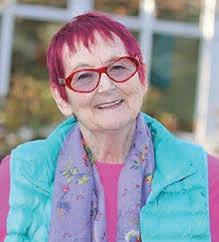
Author, poet, publisher and literary mover and shaker, Mona Fertig is set to release her first collection of poetry in 14 years, Islander (Mother Tongue $22) about the seasonal life of islanders and their love of being “islanded.” Full of lyrical folklore and attuned to nature, with lines such as these, written about a drive home one evening: “singing pop songs that lift and bob with the high beams / while grand firs and cedars / loom and leap out of the shadows like parents / to push us away from the ridge.”
9781896949895
Gary Karlsen’s historical fiction saga, Bosun: The Mariner’s Journals (self-published $24.95) introduces Norwegian mariner, Bosun Kleivik, whose journal entries include stories of surviving the Battle of the Atlantic (World War II), rage-inducing heat when stranded in the Red Sea and the horrors of whaling in Antarctic waters. Bosun’s jottings reveal a world of human failings and moral ambiguities, the meaning of love and the significance of a seafarer who exemplifies leadership and loyalty.
tist escapes an oppressed society stripped of dreams by a totalitarian regime. Told in a narrative poem format, the protagonist, Rain, is chosen by the Willows to lead a rebellion against The Bureau, a dystopian power that enforces a dream-inhibiting drug. As Rain confronts the government and the Department of Dreams, the fate of a group called The Oneironauts (who hold the secret to hope, healing and living together in harmony) hangs in the balance.
9781778162626

9781775266921
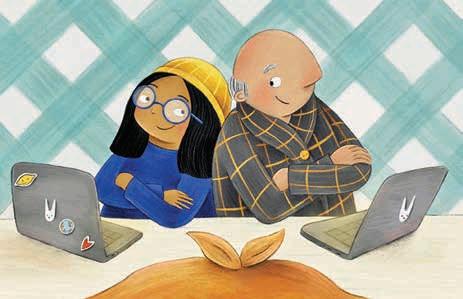
Known as “Birdergirl,” Melissa Hafting , a respected bird blogger and photographer, found solace in her ornithological passion following the loss of her parents. Dare to Bird: Exploring the Joy and Healing Power of Birds (Rocky Mountain Books $45) showcases her bird photographs and describes the positive mental health benefits of bird-watching. Hafting advocates for inclusivity in the birding community, especially for more women, BIPOC and LGBTQIA+ folks. Through her work, she also advocates for bird habitat protection.
9781771606547

In 1954, a young California woman, Bonnie McGhie , went to the North seeking to escape conventional gender norms. She married a Canadian bush pilot and moved to Inuvik, at the time a new settlement. Housing was in short supply but they made a life for themselves in the remote, inhospitable Canadian Arctic. McGhie recalls her adventures and misadventures in Hard Landings: Chasing a Dream in Canada’s Changing Arctic (self-published $24.99) as she became a co-owner of a charter flying service and a fur trading company in the early 1960s. Later she moved to BC, where she now lives in Chilliwack.
9781738795000

In his second detective story in the Sloane Donovan series, Call of the Void (NeWest $22.95), J.T. Siemens’ protagonist is bored with her new job keeping a celebrity in Vancouver safe when she takes on a cold case after a grieving mother seeks her help. Sloane is thrust into a clandestine world of missing girls, narcotics and unresolved mysteries spanning four decades. Her relentless pursuit puts loved ones in jeopardy. Siemens’ narrative (with short chapters) and Sloane’s hard-boiled determination join a new generation of sleuths.
9781774390863
Museum curator Margaret gets an unexpected inheritance of eight million dollars from her late sister Shirley, along with a whimsical request to revive an abandoned railway line. Despite skepticism, Margaret undertakes the adventure, which impacts her career, marriage, friendships and personal legacy. Gail Kirkpatrick’s novel, Sleepers and Ties (Now or Never $19.95), charts Margaret’s journey and the change it has on her life. Is it possible to take on a new challenge?
9781989689462
Noor bonds with her grandfather over a shared love for pies during the summer holidays. Once school commences, they keep in touch through weekly video chats focused on life updates over a piece of pie, which they call “pie reports.” As Granddad faces health challenges and withdraws, Noor preserves the tradition by documenting her reports until he’s ready to reconnect. The Pie Reports (Orca $21.95) for ages 6-8, written and illustrated by Hayley Lowe, emphasizes the connections between a child and grandparent who want to stay close across physical and emotional distances.
9781459838079

Tariq Malik revisits Kotli, a millennium-old city in the Punjab province of Pakistan, where he spent his formative years in Blood of Stone (Caitlin $20.00), his second poetry collection.
Malik’s descriptions point to the city’s tapestry of “secrets and yearnings,” shaped by his collective experiences of dislocation and migration. This personal exploration precedes Malik’s immigration to Canada, offering a reflection on his roots and identity. As the inhabitants of Kotli scatter in search of new homes, their journeys intertwine with those of Malik’s fellow mohijar, creating a diasporic narrative that explores themes of longing and adaptation.

9781773861265

Sockeye Silver, Saltchuck Blue by Roy Henry Vickers & Robert Budd (Harbour $9.95)
BC history has more than its share of zany characters and Daniel Marshall, a serious historian and master storyteller, captures them in key moments that he has sleuthed out from BC’s past. Some are funny, some are tragic and others are downright maddening. But they all resonate when coming to an understanding of the place we live in now.
Eggs and Fish
From Where I Stand by Jody Wilson-Raybould (UBC Press $24.95)
Having shaken up federal politics when she went from being a senior cabinet minister in Justin Trudeau’s Liberal government to becoming an independent Member of Parliament, Indigenous leader Jody Wilson-Raybould has published a collection of her speeches and lectures from the past ten years. She is forthright in her analysis of Canada’s colonial past and her desire for a new era of recognition and reconciliation.
If you’ve ever wondered what it’s like to make a living as an independent fisherman working from a remote BC island town, pick up this book of candid, humourous vignettes from a resident of Sointula on Malcolm Island. Now largely retired, Jon Taylor writes about his love of the fishboat life, even though it’s a disappearing way of life.

Every Little Scrap and Wonder: A Small-Town Childhood by Carla Funk (Greystone $29.95)
With catchy rhymes married to Roy Henry Vickers signature artwork, this children’s board book is the third instalment in a series that started with Humpback! One Eagle Soaring The concepts of colours are linked to the changing seasons on the West Coast: red tones of huck leberries in summer, silver and red flashes of spawning salmon in fall, grey rain in winter, and the sprouting of green in spring.

The eleventh installment in Whishaw’s Lane Winslow Mystery series set in the Nelson area after World War II has Lane investigating an explosion near a cabin in the woods, where she finds a young Japanese girl who is injured and mute. How this connects with a jewelry heist, and a business man with mining interests takes readers on a compelling adventure.
The Survival Guide to British Columbia by Ian Ferguson (Heritage House $19.95)
Poet Carla Funk grew up in a Mennonite community in Vanderhoof. After publishing five books of poetry, this is her first memoir, a paean to childhood and rural life in British Columbia. Paying tributes to both her church-going mother and her truck-driving father, she uses rich language to create the world that shaped her as a person and writer.
The beauty of Salish Sea islands was once threatened by logging and development. Beginning in the 1980s, locals rose up to protest, create conservation areas and the Gulf Island National Park Reserve. One of these pioneering conservationists, Sheila Harrington took a threeyear sailing trip among the islands to interview 50 other veteran conservationists whose stories are gathered in this book.
Having moved to B.C., humorist Ian Ferguson finds the place pretty – but also pretty scary. Here’s his guide on surviving everything from the province’s politics, the locals and the weather, to our food and fashion sense. Some ‘Fergusonian’ wisdom: B.C. is located – “to the left of Alberta”; speaking to B.C.’ers, means “not saying anything beyond, ‘I love trees’ and ‘forgive me’; and, you can “tell an outsider (filled with enthusi asm and interest) from a local (full of resentment and ennui).”


Purich
BooksThis is the definitive book on colonialism in Canada, both past and present. Jim Reynolds presents a compelling account of Canada’s colonial coming of age, why it is unique in the British Empire, and its impacts on Indigenous peoples. Dismantling colonialism requires understanding how and why it operates, and this book will get us closer.

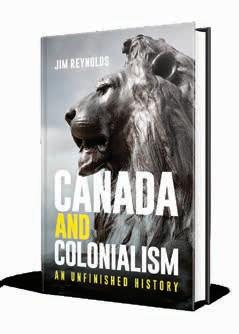


978-1-989467-76-3
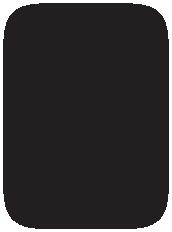
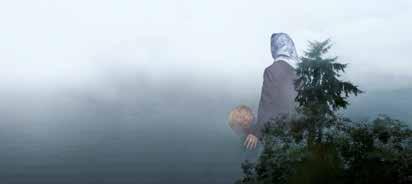
Heather Washburn, Bamfielder




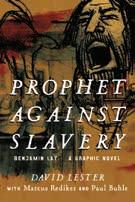
“This
—Darleen Wohlfeil, Story Monsters Ink
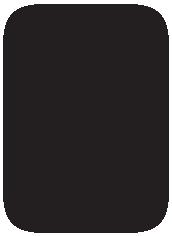





It’s 2007 and Zulaikha is travelling from Amsterdam to Tehran when she reconnects with her long-lost friend, Kia, who may know information about Zulaikha’s missing brother, Hessam, and their murdered friend, Abbass. When her flight is suddenly cancelled, Zulaikha is detained by both the European and Iranian authorities, who question her relationship with Kia. Niloufar-Lily Soltani’s debut novel, Zulaikha (Inanna $24.95), is a tale of war’s consequences, greed, power and international politics. The narrative covers Iran’s tumultuous history, particularly in Khuzestan, a region marked by tension between Iran and the U.S. 9781771339568
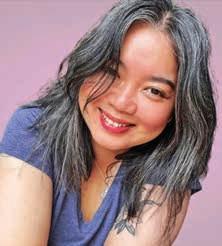
The fear and courage in fleeing a violent country and seeking a new home across cultures and continents is described in Onjana Yawnghwe’s third book of poetry, We Follow the River (Caitlin $20). Yawnghwe’s family fled Myanmar’s oppressive army, first to Thailand and then to Canada. Her previous poetry collections, Fragments, Desire (Oolichan, 2017), and The Small Way (Dagger Editions, 2018), were both nominated for the Dorothy Livesay Poetry Prize. Yawnghwe lives in Coquitlam. 9781773861388
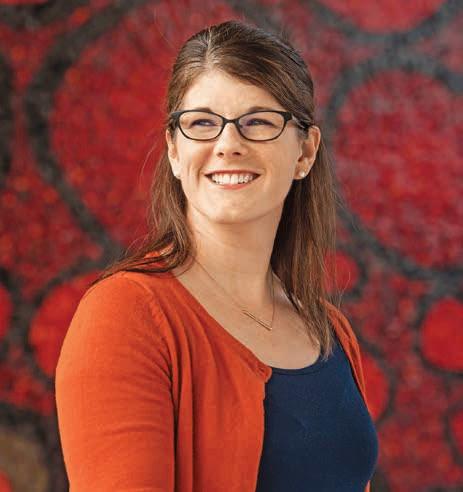

elite athlete, represented Canada in both sprint canoe and rugby competitions. She now works as a celebrity trainer and was recently hired to be the mental skills and culture coach of the Canadian Olympic Women’s 7s rugby team. Payne lives on Vancouver Island. 9781773272146

When the Canadian government discouraged and outlawed First Nations’ cultural activities such as potlatches, many Indigenous people carried on their traditional practices underground to keep them alive. Some, like Elizabeth Quocksister (1925–1981)
openly and proudly carried on using her Indigenous language and culture as chronicled in Elizabeth Quocksister: Keeper of History (Heritage $19.95) by Haley Healey with George Quocksister Jr., a Hereditary Chief of the Laichwiltach Nation and son of Elizabeth Quocksister. Illustrations are by Kimiko Fraser. Despite being a residential school survivor, Elizabeth Quocksister continued to speak and teach Kwak’wala, and became a cultural teacher and leader for her Da’naxda’xw Nation. She also documented her people’s history under the Indian Act through photography.
9781772034844
Part of the joy of a collection of short stories is the surprising range of characters and situations that can spring from an author’s imagination. Richard Kelly Kemick ’s debut collection of character-driven stories, Hello, Horse (Biblioasis $22.95), range from the humorous to the bizarre. They include two brothers seeking fame through a doomed exploration on a subarctic lake; a teenager mucking out stalls at a dog track whose co-worker takes up a new religion at odds with winning streaks; and two teachers at a convention in Cuba trying to decide if they should have an affair.
9781771966078
What is “diming?” It’s living a life that is consistently as close to ten out of ten as possible says Jill Payne in her selfhelp book, Be a Dime: Unleash Your Inherent Energy and Live Life More Joyfully (Figure 1 $22.95). Payne, an

Jill Payne has a background in kinesiology and education and earned her Masters in Employee Engagement and Workplace Performance.
Julia Smith highlights the gendered nature of the COVID-19 responsewith a focus on women who bore the brunt of the pandemic’s impacts in Conscripted to Care: Women on the Frontlines of the COVID-19 Response (McGill-Queen’s University Press $34.95). Smith interviewed nearly two hundred women for her book. They described the inequalities of working at the pandemic’s frontlines with inadequate resources and limited decision-making power. These women juggled paid work, unpaid care, mental load and emotional labour, facing unsustainable workloads, moral distress and burnout.
9780228018759
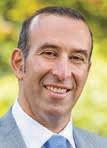
As we shift from a fossil fuel-driven economy to a digital, carbonneutral one, the question remains if mining the minerals needed for batteries and circuit boards can be done in an environmentally friendly way. Heavy Metal: Earth’s Minerals and the Future of Sustainable Societies (OpenBook unpriced) edited by UBC prof, Philippe Tortell, is a collection of essays from diverse authors including scientists, cultural pundit Naomi Klein and business prof Werner Antweiler with artwork from Edward Burtynsky . Seeking to help readers “understand and reimagine our relationship with minerals,” the publishers allow this book to be freely downloaded from their website.
9781783749560



Ussif Rashid Sumaila has coedited Sea Change: Charting a Sustainable Future for Oceans in Canada (UBC Press $45) with contributions from over 50 scholars reporting on the work of the OceanCanada Partnership, an ongoing major research project seeking to take stock of what we know about Canada’s three oceans. This informed and practical book includes knowledge of Indigenous and non-Indigenous scholars and practitioners who explore and study the livelihoods of coastal communities. The focus is on finding solutions for problems caused by changes due to overharvesting and polluting.

9780774869041
Alli Vail ’s debut novel, Brooklyn Thomas Isn’t Here (Post Hill Press $25.99) follows young Brooklyn Thomas as she faces a series of challenges: her best friend is missing, her career is in shambles and she’s back living with her parents struggling to make ends meet. Brooklyn is pretty sure that she’s mostly dead. She can’t feel her heart beating and her reflection keeps vanishing from mirrors but no one else in her life seems to notice. Things turn surreal when Brooklyn hallucinates about stars from her favourite TV shows who urge her to confront her past. 9798888452899
Quirky illustrations combine with a story that engages the senses in retired lighthouse keeper, Caroline Woodward’s book for children of all ages, Have You Ever Heard a Whale Exhale? (Pownal Street Press $24.95). In this immersive narrative, Woodward and Vancouver Island-based illustrator, Claire Watson , guide readers through an exploration of touch, taste, sight and smell. From sun-warmed rocks to crackling campfires, the story comes alive, echoing the sounds of dolphins, sea lions and other coastal creatures. Woodward continues to write from the village of New Denver. 9781998129072
Discover the buried treasures that make British Columbia special in Points of Interest: In Search of the Places, People, and Stories of BC (Greystone Books $24.95). Edited by David Beers and andrea bennett , this literary road trip is an anthology marking The Tyee’s 20th anniversary and features 30 writers including J.B. MacKinnon, Alisa Smith, Harrison Mooney, Michelle Cyca, Ian Gill, Steve Burgess and Chris Cheung, exploring the province where they live and write. The Tyee is an independent daily news website based in Vancouver. 9781778401381
Maureen Young creates an imaginary world about an “Eastside Warren” of hares in Sunny and the Border Patrol (FriesenPress $12.49). The hares live comfortably until their source of food— an area of vegetable gardens—is walled off with a fence by humans (whom they call “Small-Ears”). Two of the Eastside Warren hares, Harrow and Arty, who are junior Border Patrollers, set off with a senior Patroller to get help from the Big River Beavers who live much farther west. But to get there, the three hares have to cross the dangerous inner city. 9781039163737

In her debut book of poems and prose, The Knot of My Tongue (M&S $22.50), Zehra Naqvi writes of characters such as a father struggling to articulate himself as an immigrant in Canada; a grandmother navigating loss during the 1947 Partition on the Indian subcontinent; and the tales of Hajar from Islamic lore and Philomela from Greek mythology, who finds language even after her tongue is cut off. Naqvi’s narratives are blends of the personal and the communal, memory and myth, theology and tradition. Born in Karachi, Pakistan and raised in Vancouver, Naqvi won the 2021 RBC Bronwen Wallace Award for Emerging Writers and is a Rhodes Scholar. 9780771014932
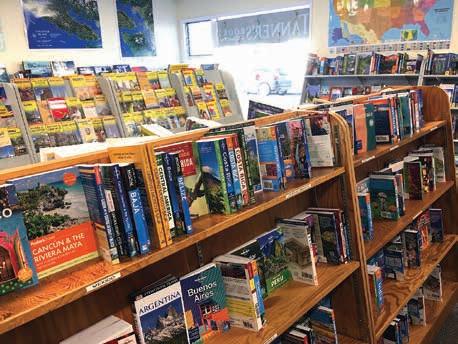



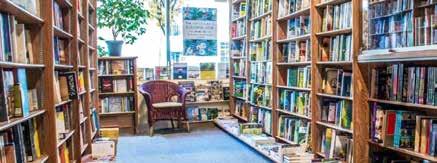
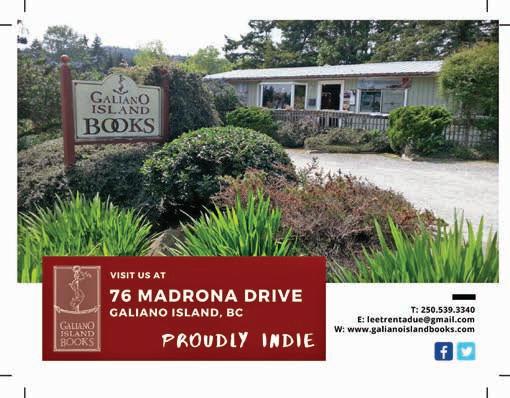


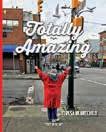
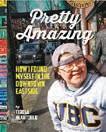

“The
lice Munro , the first Canadian accorded the Nobel Prize for Literature (2013), died on May 13, 2024. She also won the 2009 Man Booker International Prize, was twice the winner of the Giller Prize (Canada’s most glitzy literary prize) and was three times the recipient of the Governor General’s Award for Fiction (Canada’s most venerable literary prize). Her work gained her the distinction, accorded by The New York Times, of being “the only living writer in the English language to have made a major career out of short fiction alone.” In 2004, that newspaper also produced the oft-repeated compliment, “More than any writer since Chekhov , Munro strives for and achieves, in each of her stories, a gestaltlike completeness in the representation of a life.”
Born as Alice Laidlaw in Ontario on July 10, 1931, she married fellow student Jim Munro in 1951 and the couple moved to Vancouver in 1952, where Alice worked for a period in the Kitsilano Library. They opened their first bookstore in West Vancouver, Pick-a-Pocket Bookshop. In 1963, the Munros moved to Victoria and opened Munro’s Books. In all, Alice Munro lived in Vancouver and Victoria for 22 years before her first marriage ended and she moved back to Ontario. For


Local historian and writer, Fred Braches, died on February 1, 2024 at the age of 93.
After his retirement in 1995, Braches began researching and writing books about Whonnock, a rural community in the eastern part of Maple Ridge where he spent the latter years of his life.
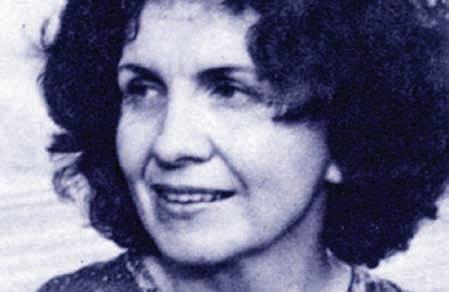
several years, Alice Munro maintained two residences: one in Clinton, Ontario and another in Comox on Vancouver Island. She received the news of her Nobel Prize at 4 a.m. while visiting one of her daughters in Victoria. “It just seems impossible,” she told the CBC. “It seems just so splendid a thing to happen, I can’t describe it, it’s more than I can say.”
Alice Munro’s dual status as a British Columbian and an Ontario resident is often overlooked. “I like the West Coast attitudes,” she said in 2004. “Winters [in B.C.] to me are sort of like a holiday. People are thinking about themselves. The way I grew up, people were thinking about duty.” One

In addition to several books on the local history of Whonnock, as well as nearby Ruskin community, Braches received attention for his book about the myth of Slumach’s gold, Searching for Pitt Lake Gold: Facts and Fantasy in the Legend of Slumach (Heritage House, 2019). He had been featured about this matter earlier in the TV series Curse of the Frozen Gold (2015).
“Fred was an avid historian and researcher and Heritage House was proud to work with him on Searching for Pitt
can suggest the dichotomy between duty and exploration is a fundamental friction in her stories; and the geographical disparity between unruly British Columbia and hidebound Ontario matches her character.
Alice Munro made her critically acclaimed debut with Dance of the Happy Shades (1968), written mostly in Victoria. Her second book, Lives of Girls and Women (1971), was the basis for a Canadian movie. In addition, Sarah Polley adapted the story “The Bear Came Over the Mountain” for the film Away from Her (2006), starring Julie Christie and Gordon Pinsent In all, Alice Munro wrote 17 books of short story collections.
Lake Gold,” says Monica Miller, marketing and publicity assistant for Heritage House.
Braches also amassed materials, and wrote about, the life and times of the early Fraser Valley pioneer, George Godwin (1889–1974), who wrote two novels connected to Whonnock, one of which, The Eternal Forest (1929), is considered the great novel of the Fraser Valley.
Braches had been a historical columnist for the Maple Ridge–Pitt Meadows News and also served as the editor of the B.C. Historical News (before it was renamed British Columbia History magazine).
Born on October 8, 1930 in Padang, Indonesia, Braches moved to the Netherlands in 1947, later starting a career in ocean transportation in Amsterdam that led to being stationed for many years in South America, Hong Kong and Mexico City. He immigrated to Canada in 1985 when he moved to Whonnock.


For authors, creatives and publishers from coast to coast! B.C.’s Leader in Creating Brilliant Books!
Contact us today! books@islandblue.com or 1.800.661.3332 www.islandblue.com

Printing and Shipping Books, Bookmarks, Business Cards and Posters across North America!
Discover Marquis Book Printing, one of the largest manufacturers in North America
We offer to thousands of publishers:
• Manufacturing of all types of books and all types of binding
• Fast turnaround time and flexibility with all print run sizes
• Innovative integrated printing and logistics solutions
• Fast online book replenishment with Marquis Express
• Eco-friendly manufacturing options
• Optimal quality colour printing on all types of paper with our new carbon neutral UV press

